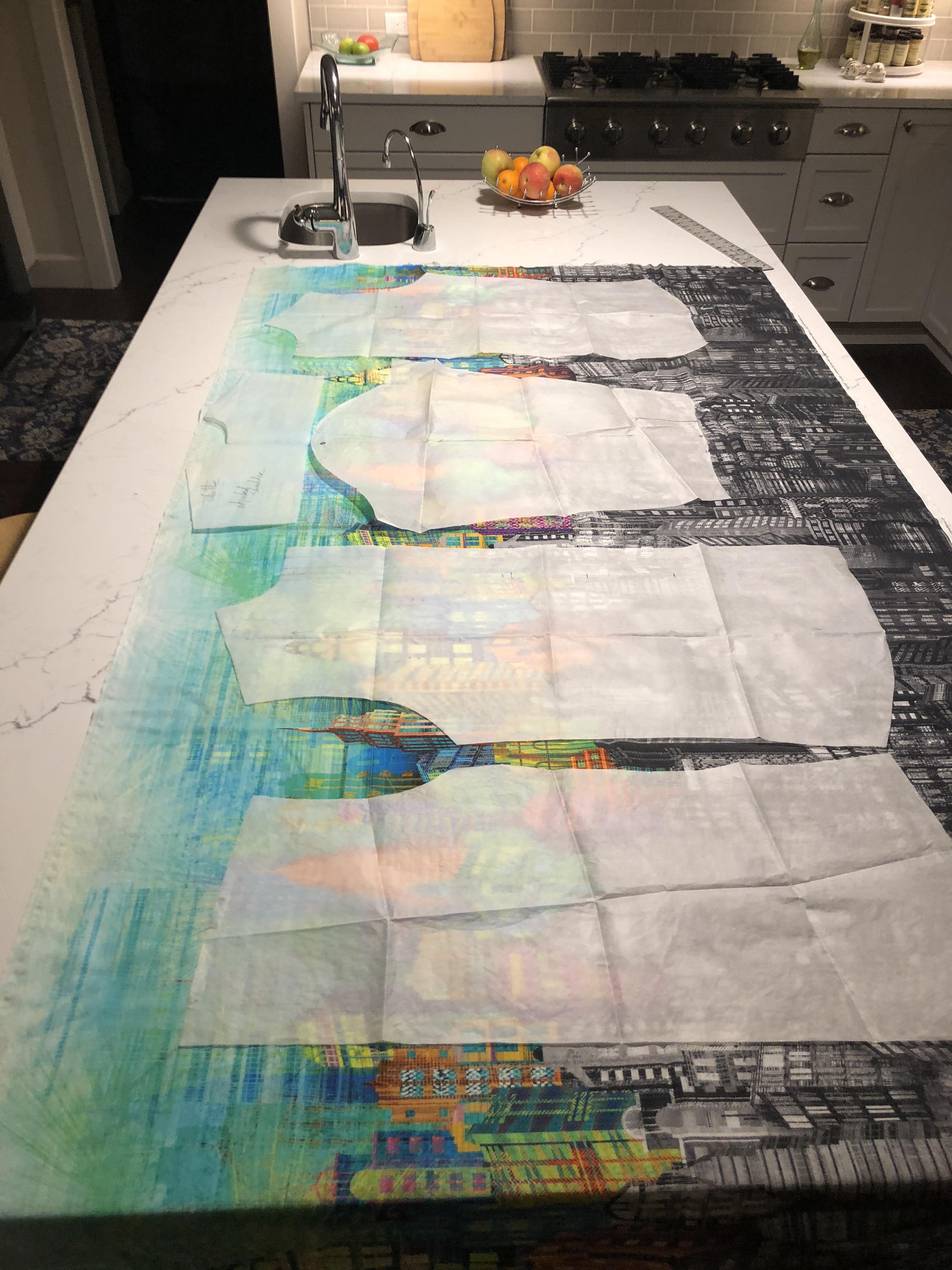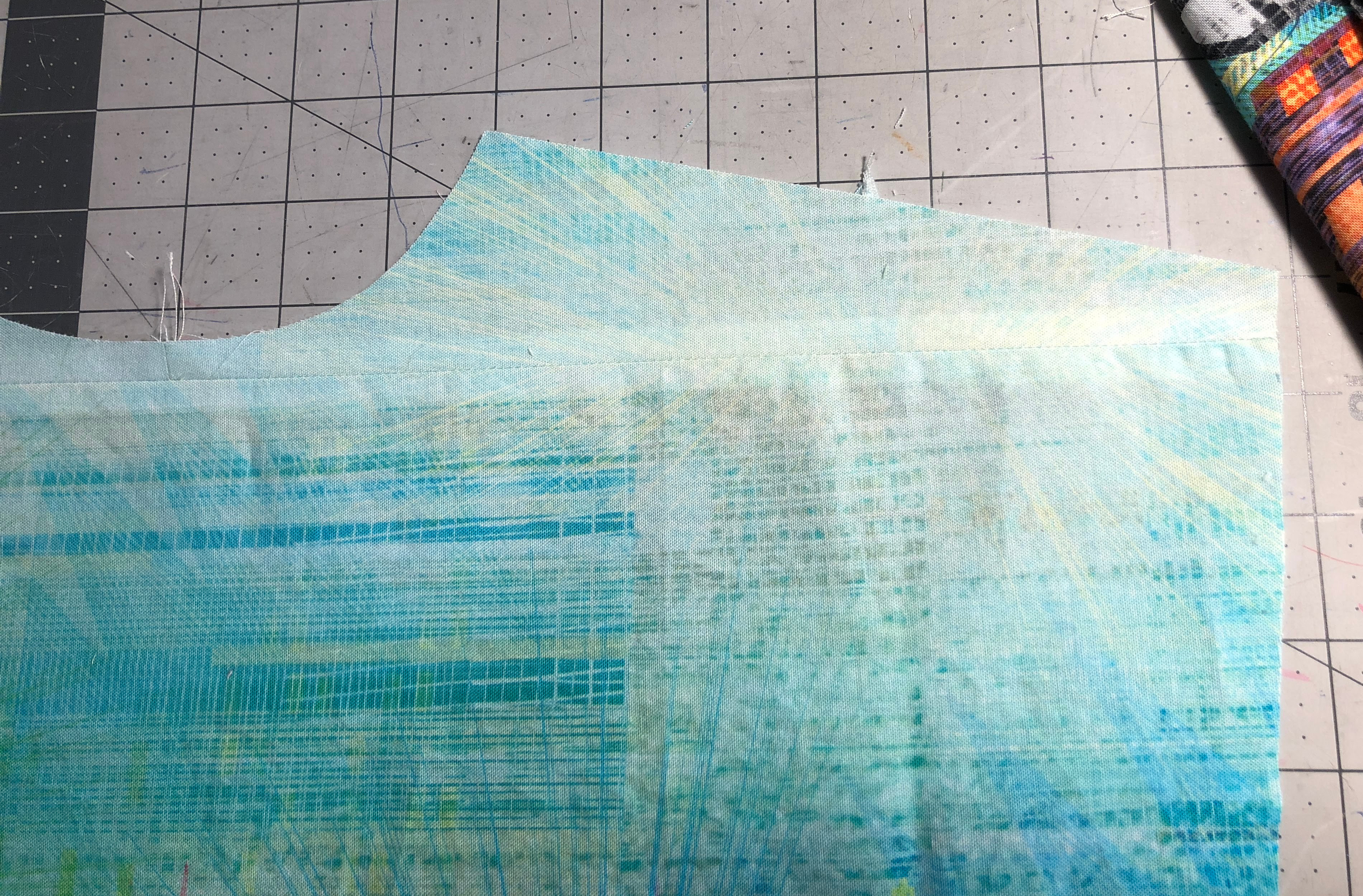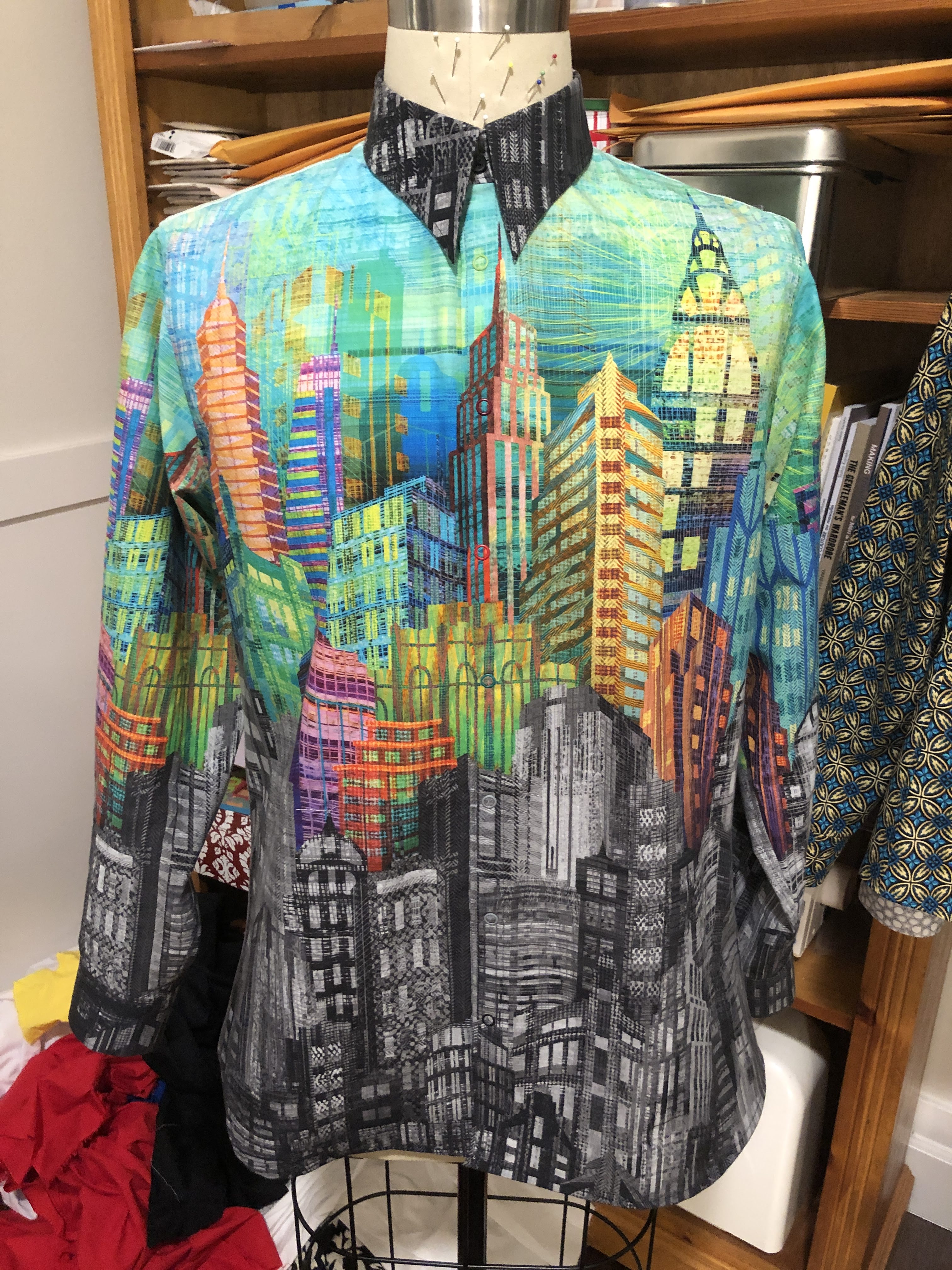It seems like this has been a year of making facemasks and jeans. The former because we had to, and the latter because I didn’t seem to have that many. It just doesn’t feel right to dress the same as I would in the office, when I now just walk downstairs and sit in my sewing-room/home-office. So I really did need more jeans. And eventually I got tired of sewing masks and jeans, and needed to do something else.
Just as it happens I was browsing through Instagram and looked through older posts from @adamarnoldstudio. And I was somehow struck by this photo.
I thought it was silly clever. A sweater that pretends to be a caricature shirt.
And then I realized I could do something with that idea.
I’ve made numerous shirts in the past years. And I think I can count the times I’ve worn a tie with them on my fingers. But I can do something with this. A shirt and a tie. Not just two things that are combined, but two things that are part of one.
In the past, whenever I’ve seen some fabric with a pattern that I liked, I’ve looked for the same pattern in different colors. There is always something fun you can do with that. If I liked those additional colors, they would come home too. That is basically how things like the Faces shirt came about. With so much fabric in my stash, there should be something appropriate for what I had in mind.

This fabric seemed perfect. A simple off-white color, with poems of Johann Wolfgang von Goethe on it. And I had the matching in black too.
What I thought I could do with this was make a ‘tie’ that was really a hidden button placket. The ‘tie’ and the shirt would be attached, but independent enough that it was not obvious that it was attached. And functional that it allowed the buttons to be hidden behind it.
Of course, I only had bought a fat quarter of the black fabric. Maybe I only intended to make a contrasting pocket or cuffs? That really limited how long the tie could be. 18 inches is short for a tie, but it would have to do.
Since both the fabrics have the same poems on them, I had to see if I could match the pattern across the whole front. This seemed difficult, given the amount of fabric I had to work with, but definitely maybe possible.
And once that thought had crept into my mind, that was going to be the goal. Next was going to be the puzzle of figuring out where which pattern piece would have to be extracted from the limited fabric I had. And I had to create the pattern piece for the tie itself.
The latter turned out to be easier than I thought. The length was determined by the length of the black fabric. A standard tie is 3 inches wide, and I figured I would make the real placket, which would extend below the tie, 3/4 inches wide. Then it is just draw the tie diamond shape on a piece of paper, and add all the folds that will end up behind it. Before I was done with it, I had caught myself making a couple of mistakes. Forgetting the seam allowance, making a part that was supposed to be parallel tapered, etc. Since all of this is done with paper, a liberal amount of sellotape will fix those errors before you commit them to the fabric. And the paper is easy to fold, to check the way the end product will perform.

The pattern in the photo here is actually upside down. What is not obvious from this photo is how this is supposed to be used. Here is a diagram that makes that hopefully a bit clearer:
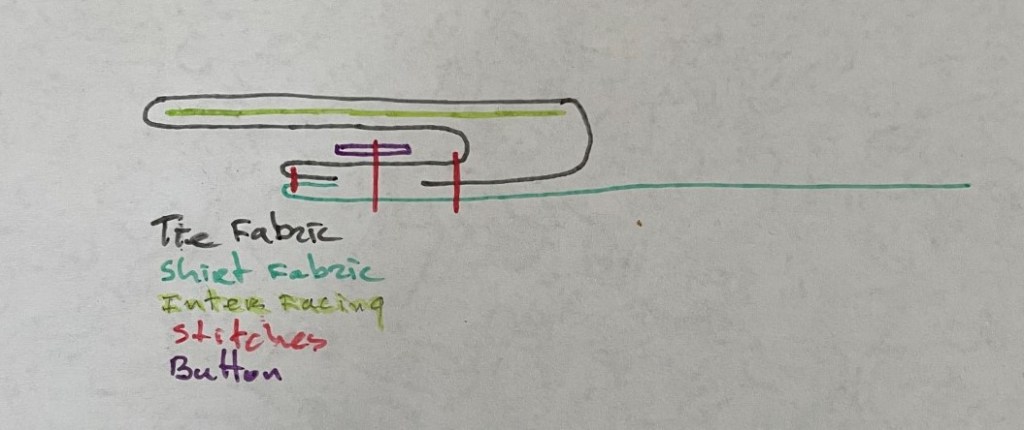
Most hidden button plackets I make are ‘grown on’, but this one needs to be ‘sewn on’. Not a huge difference, but you do have to keep your wits about you to avoid missing a required seam allowance.
I did what I normally do when trying to pattern match fronts; drawsome landmarks on the pattern pieces. First on the tie, because that had a limited fabric supply. Then align the front center marking on the tie pattern and one of the front patterns and transfer the landmarks (just pieces of text I could easily find). And then align that with the fabric. Repeat for the other front. You do have to make sure that all the pieces of fabric have been squared before you start, or you may end up with alignments at the top, but not the bottom.
The tie and front came together easily once I had everything cut out. The only issue was the extra ‘normal’ placket that would continue down from where the tie ended. The tie’s tip is not connected to the shirt, and I had to figure out how to connect the two without showing that the tie was connected to the front. I ended up creating a strip of fabric that I sewed to the part you see on the right in the photo above, under a 45 degree angle. This way you could not see the seam without lifting the tie up. Aligning this, to maintain the pattern match was a hassle and took me many tries to get it done well. Basting this proved to be a requirement for a good result.
When I had this done I wanted to see how it looked on the dress form. And since I hadn’t made any shirts in what seemed like forever, I got a bit ahead of myself. I did the burrito method, and then sewed the side seams. It looked great on the form. Made the collar, with the outside of the collar stand in the black fabric to mimic the rest of the tie. But then came the sleeves, and after attaching the plackets, I realized that you don’t sew the side seam until you have the sleeves attached. And I had already made the flat felled seams. I had to laugh at myself, forgetting such an elementary step. After thinking it over a bit I just decided to make the sleeves separately, including the cuffs, and then set them in as you would do with a jacket. A bit more fussy, but in the end you can’t tell.
I made a little double triangle of the black fabric, and stuffed it with scraps. This would become the fake knot of the tie. The collar I chose to close with a snap, for I couldn’t think of a good way to hide a button there.

Thanks for reading!

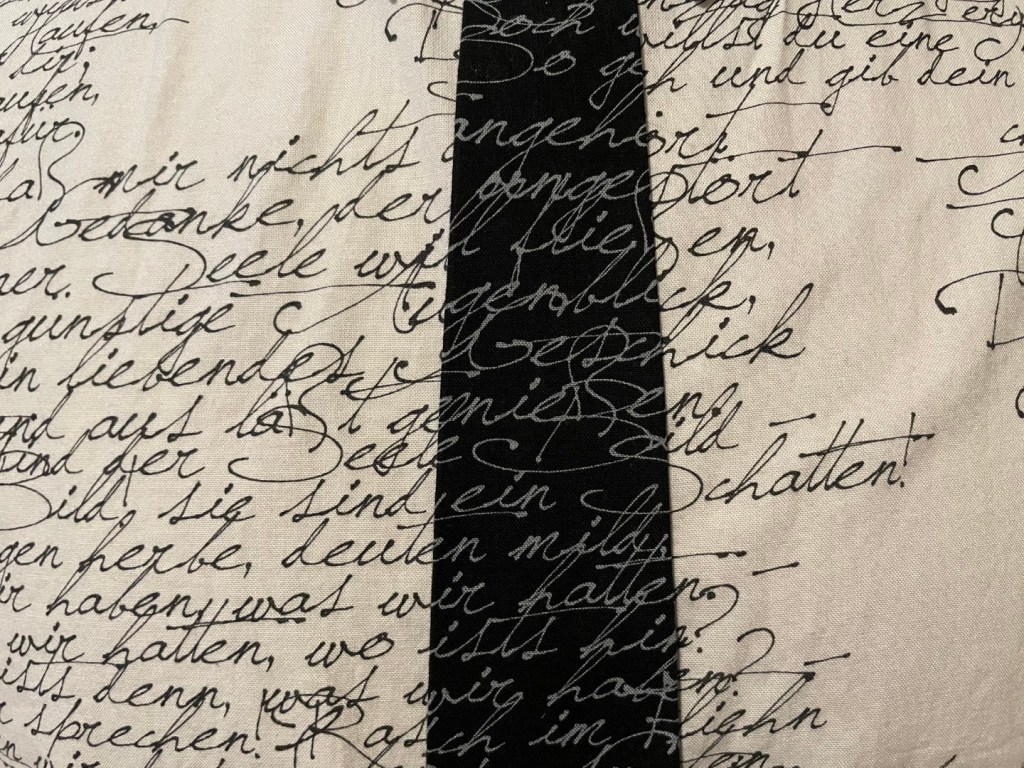

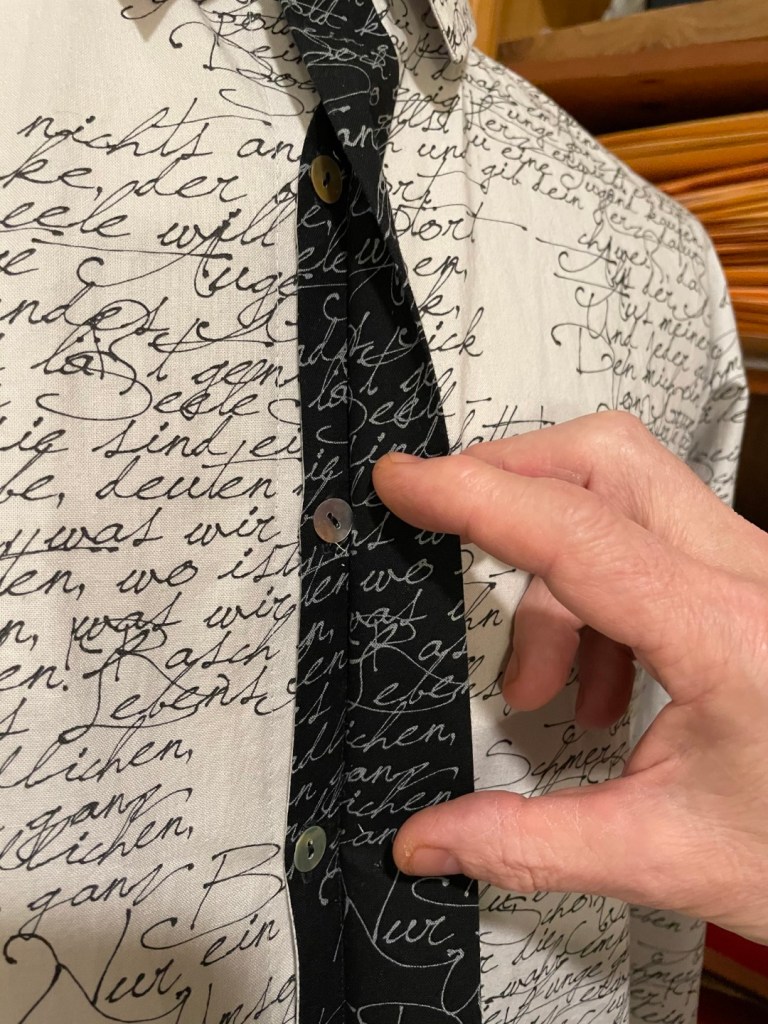
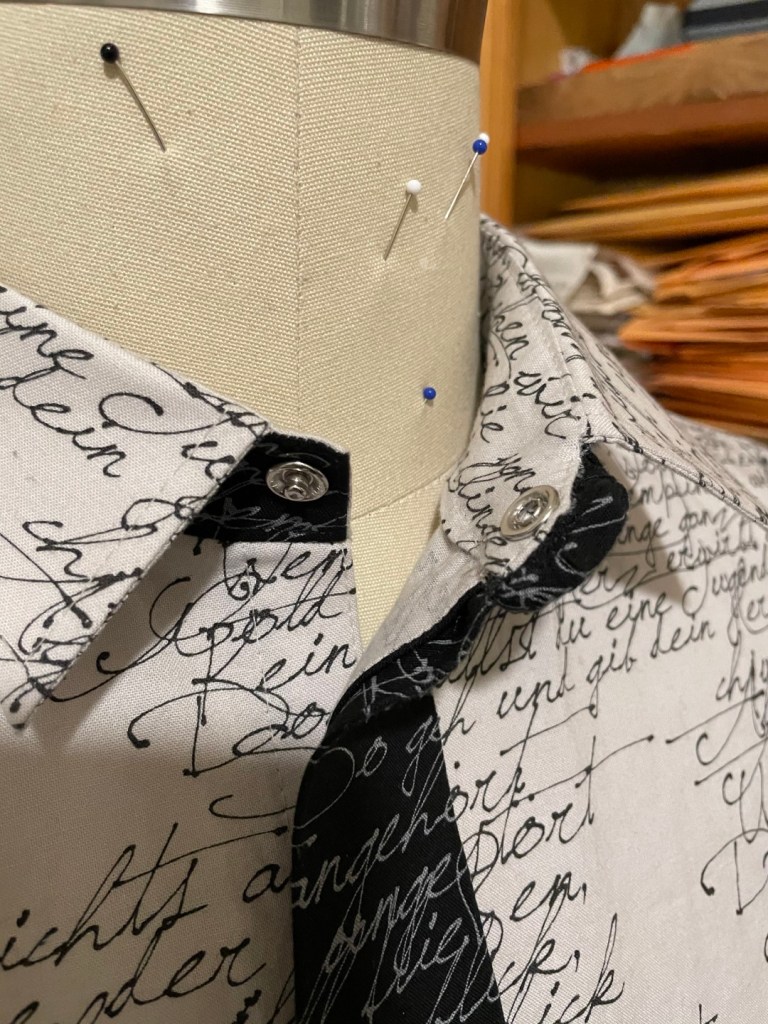
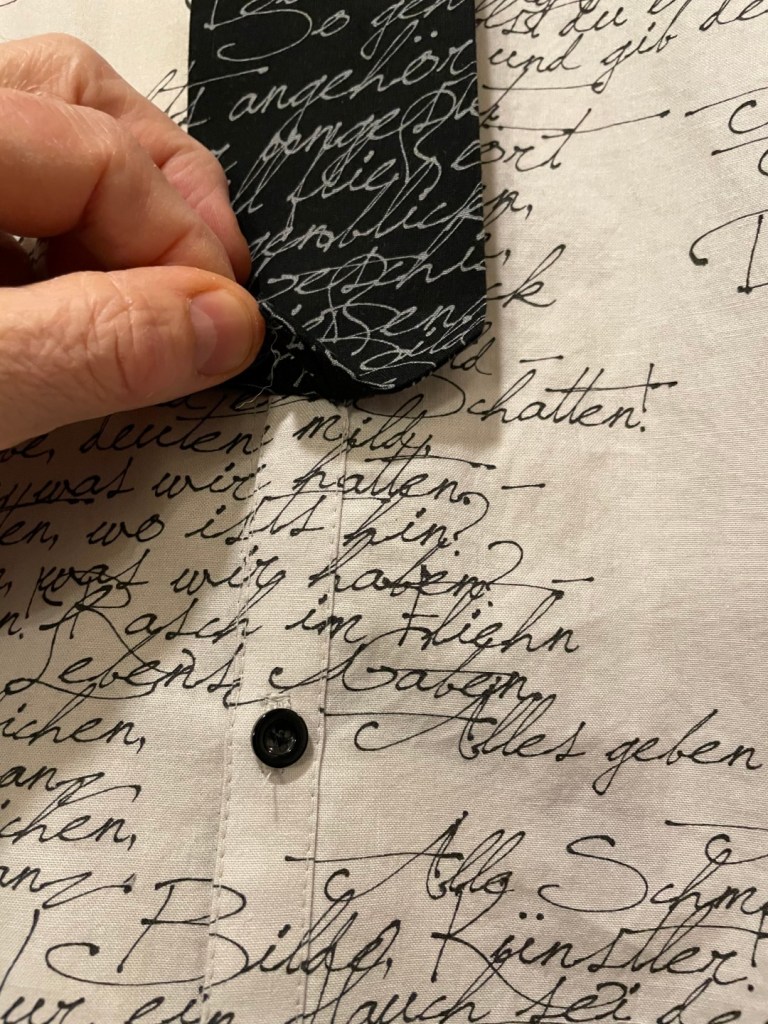
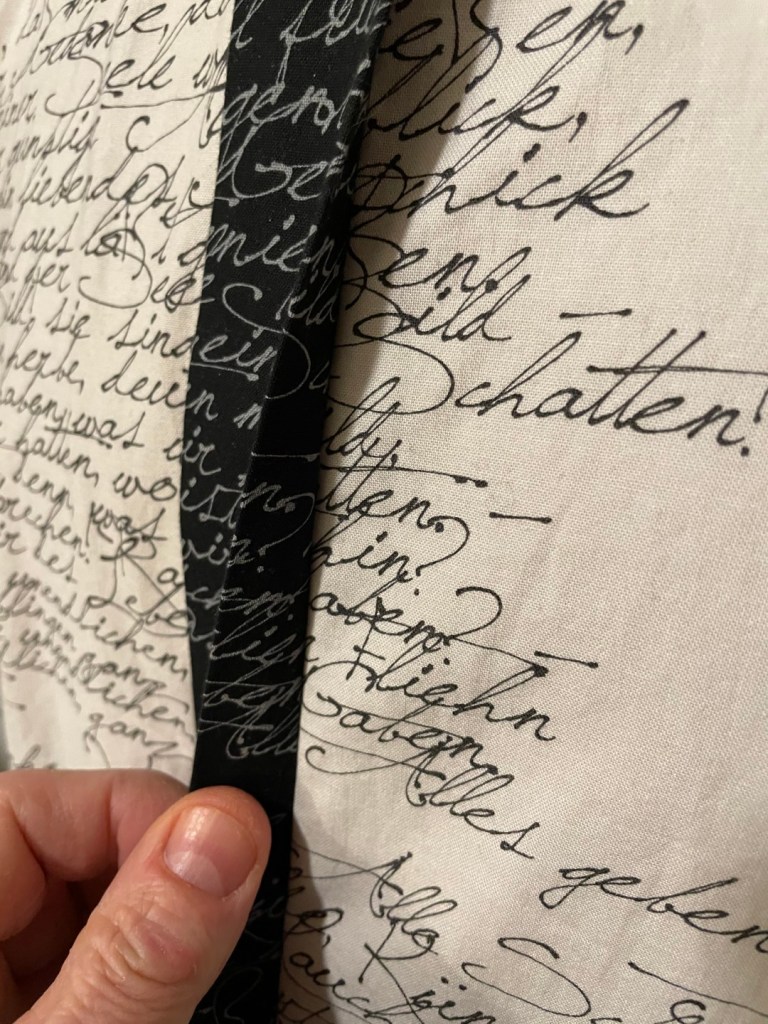
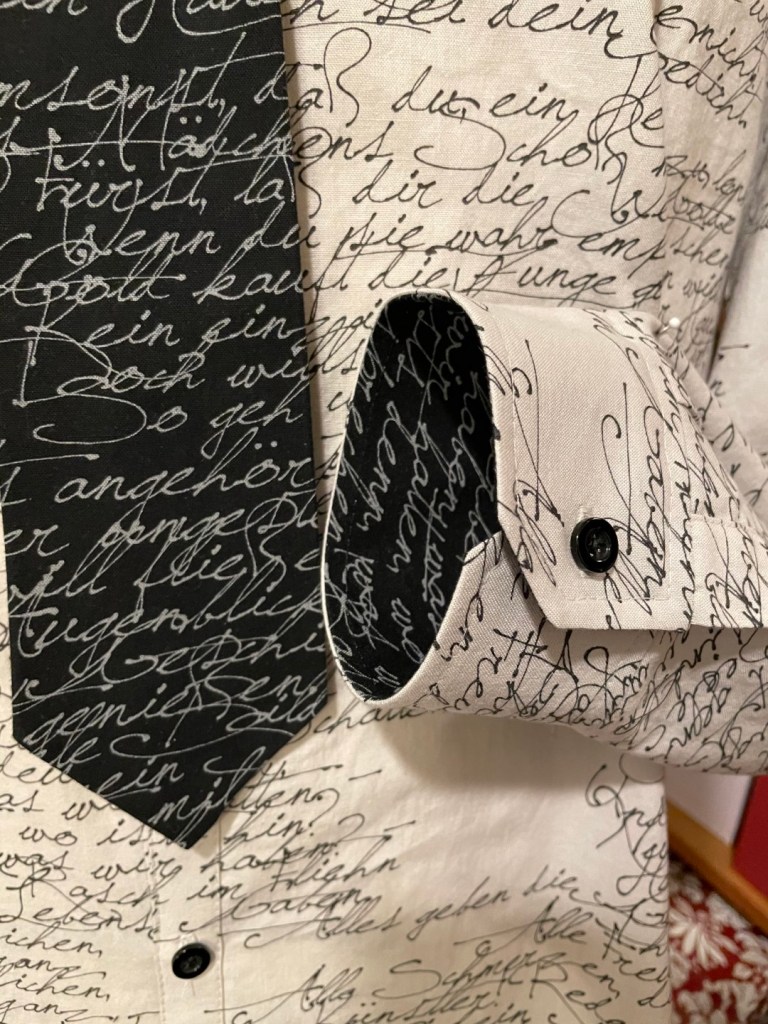


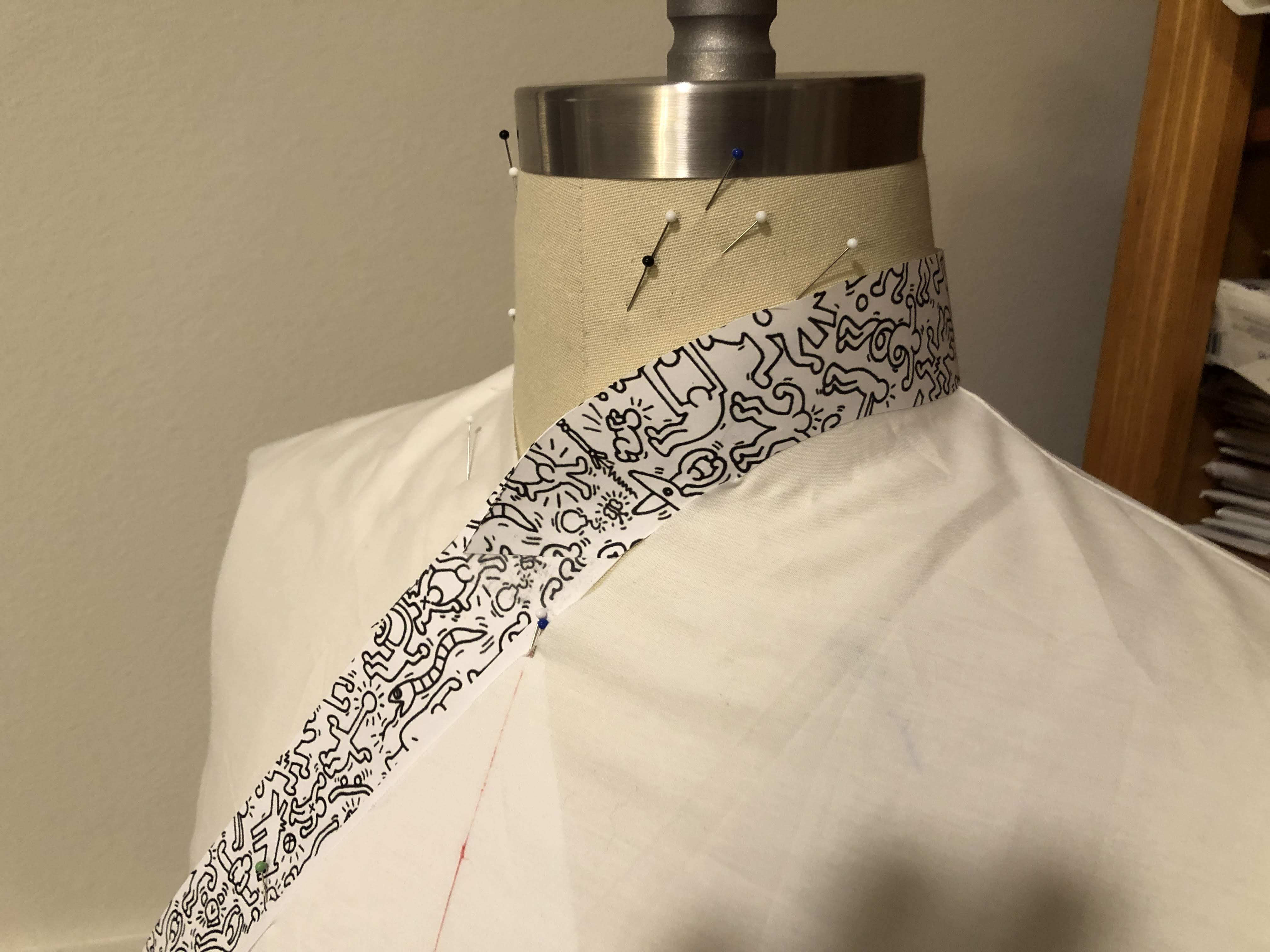
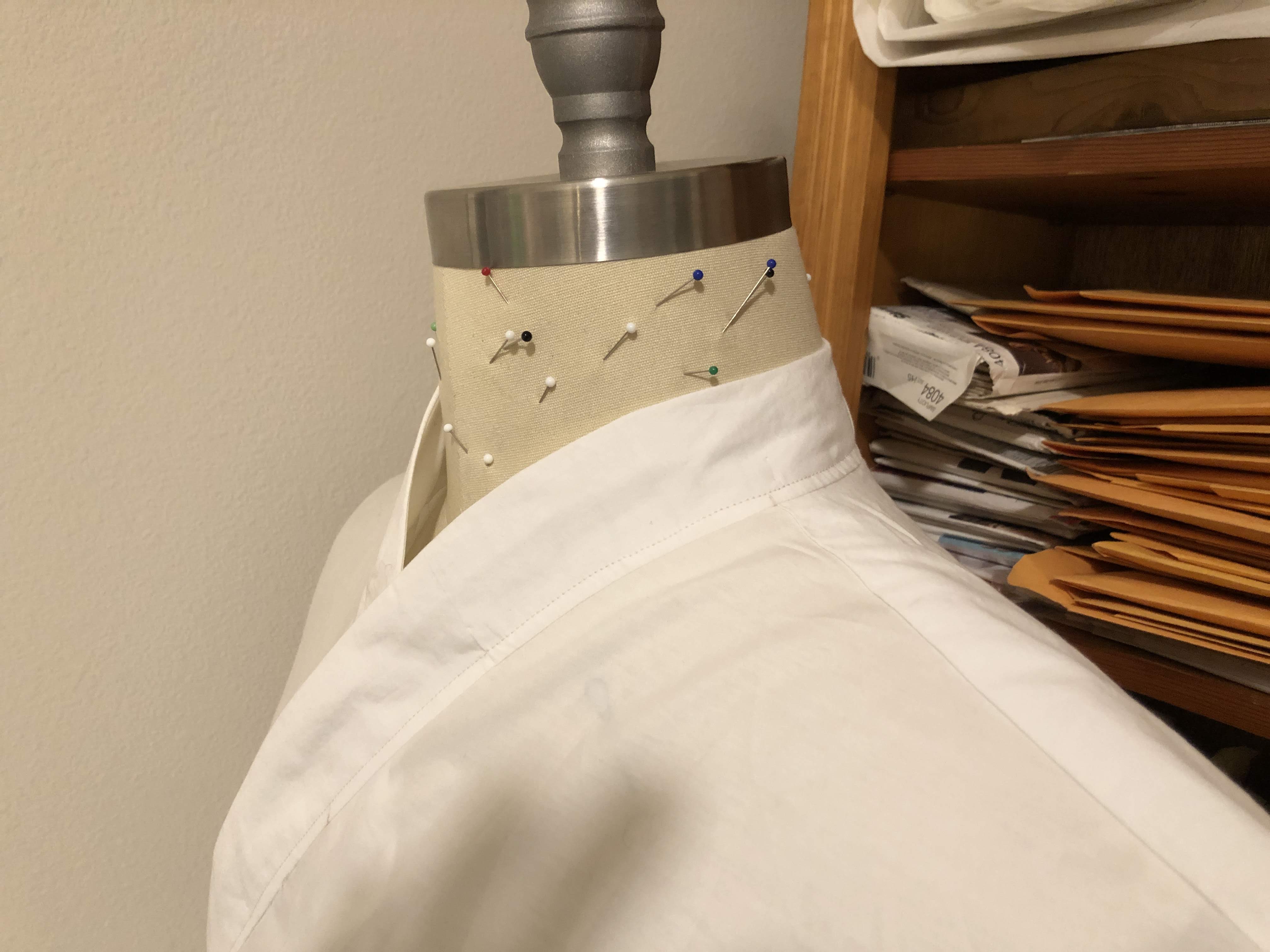
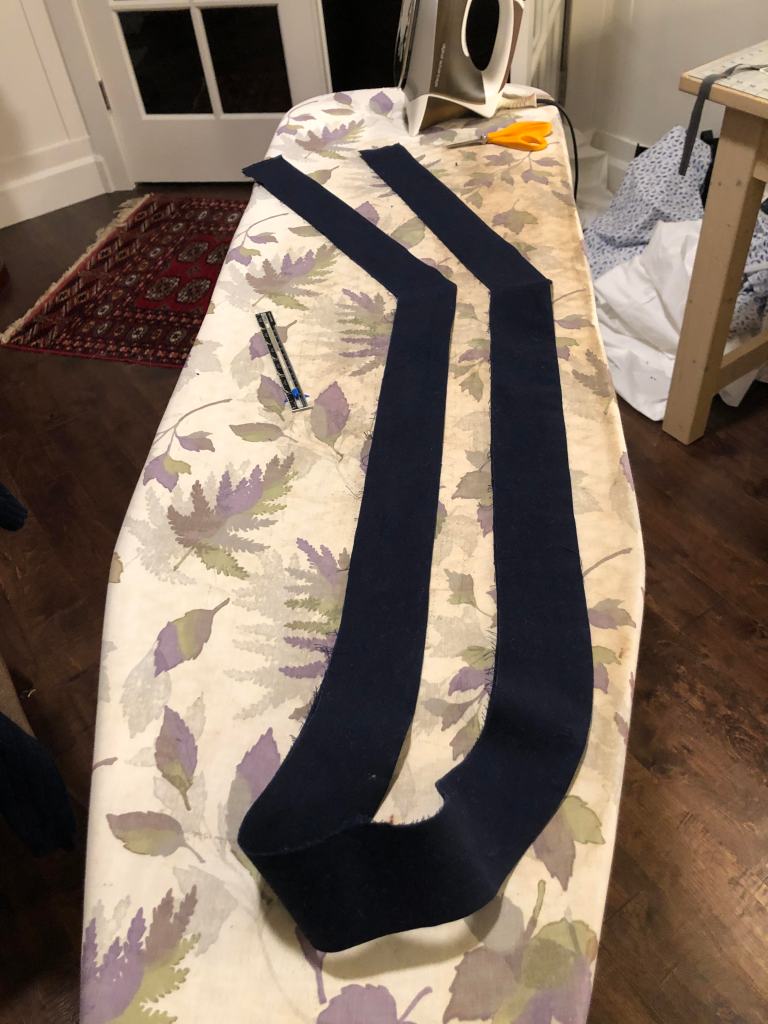

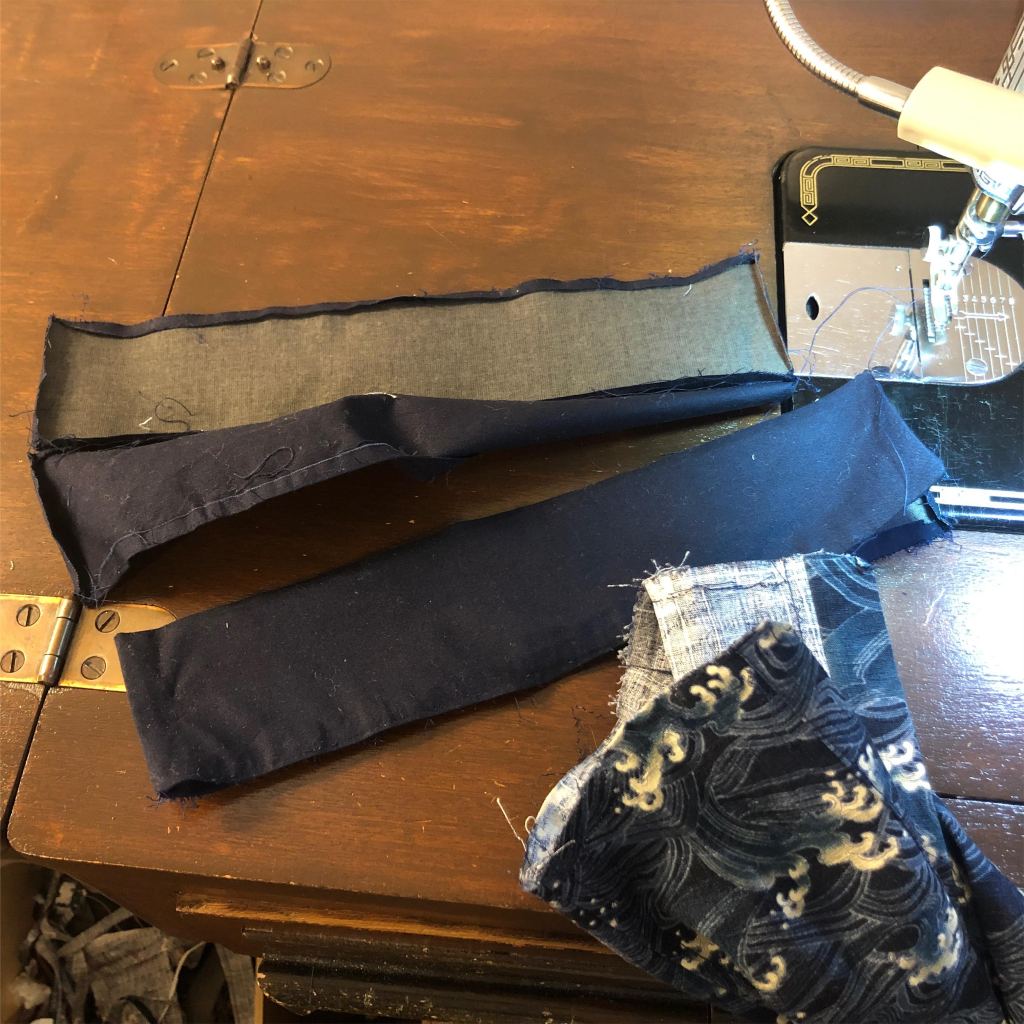
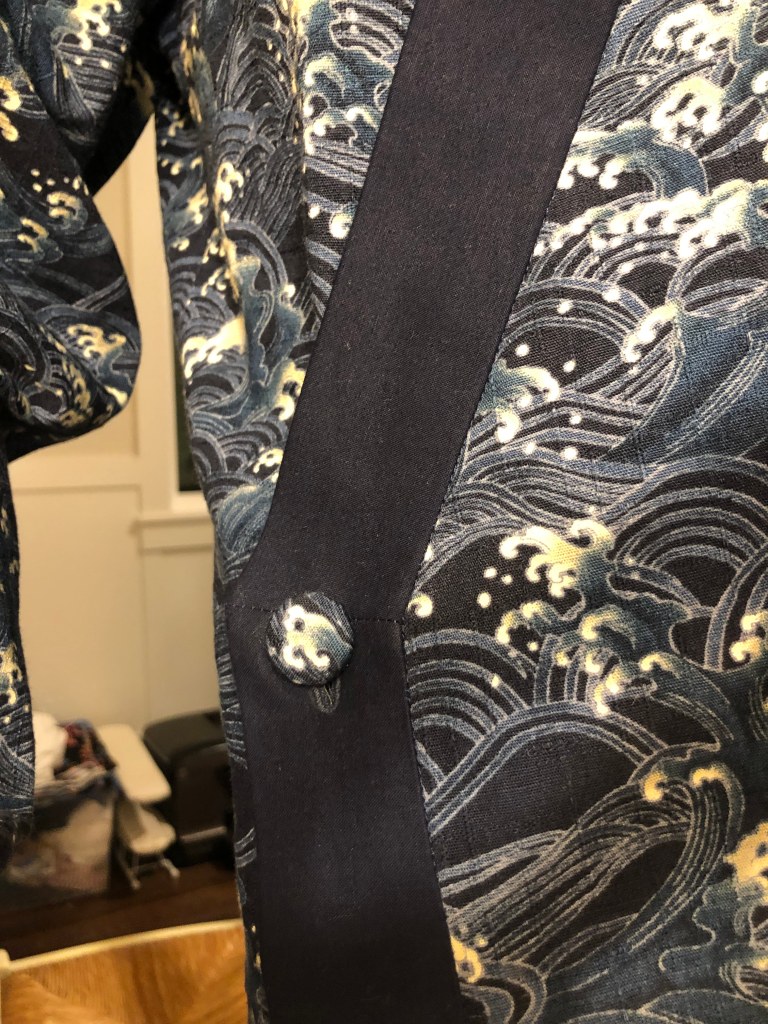
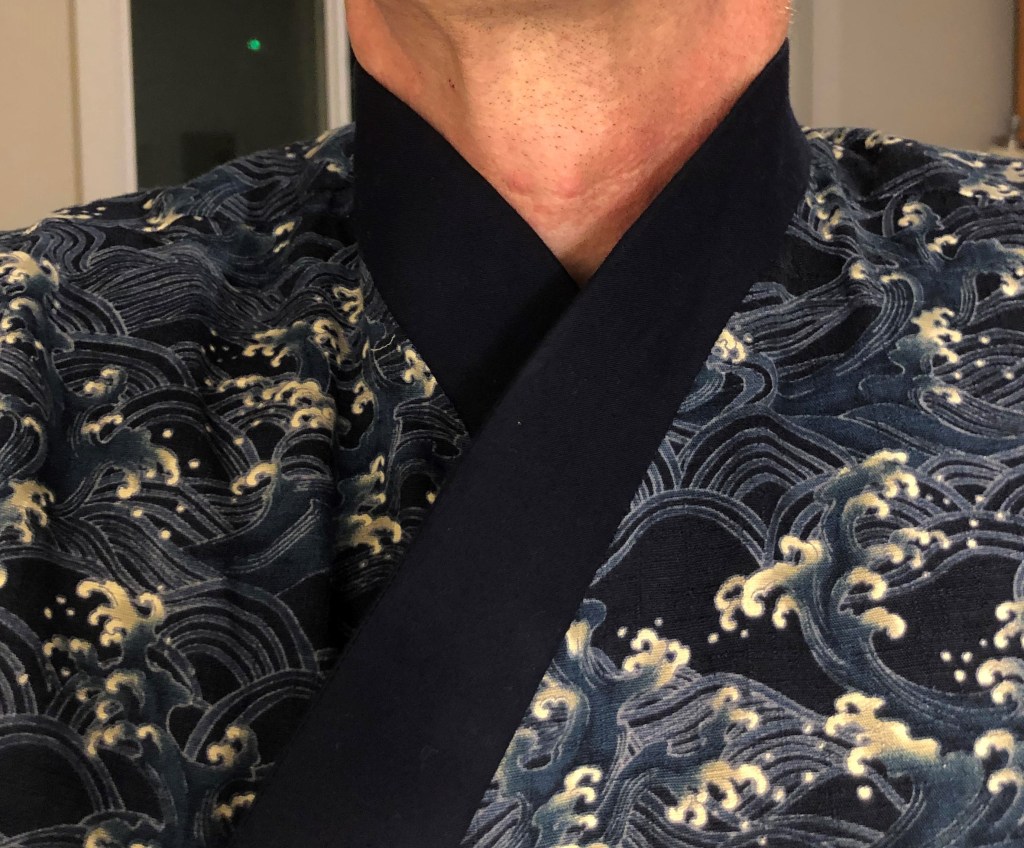

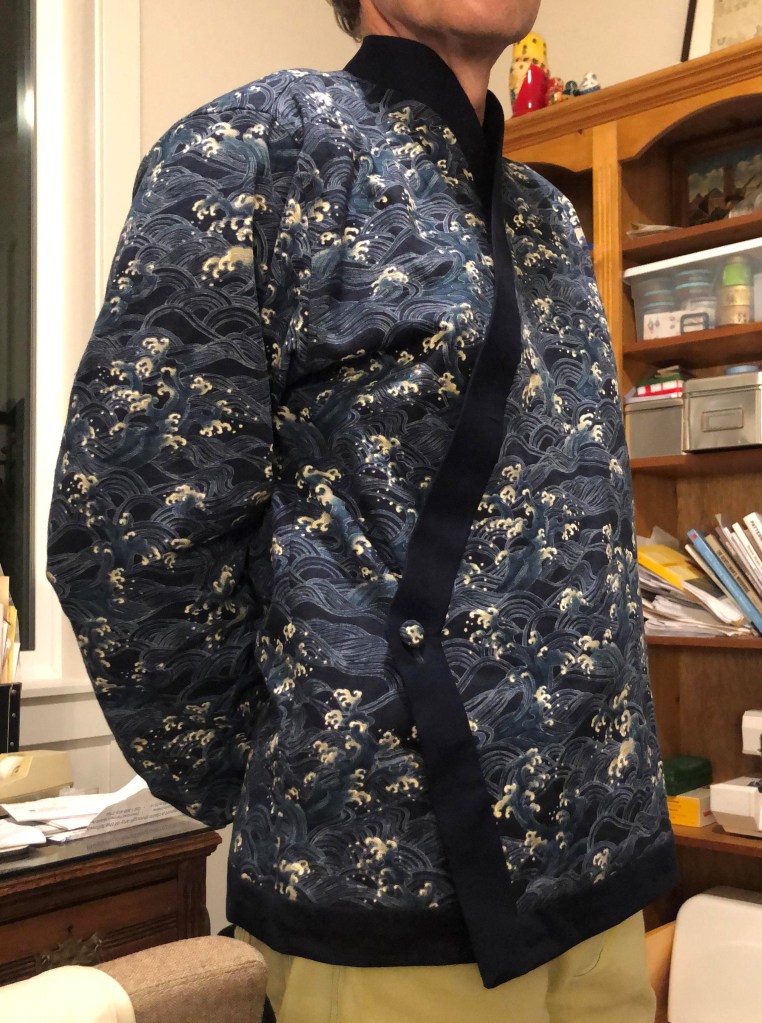

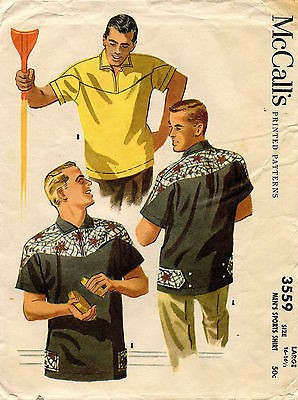

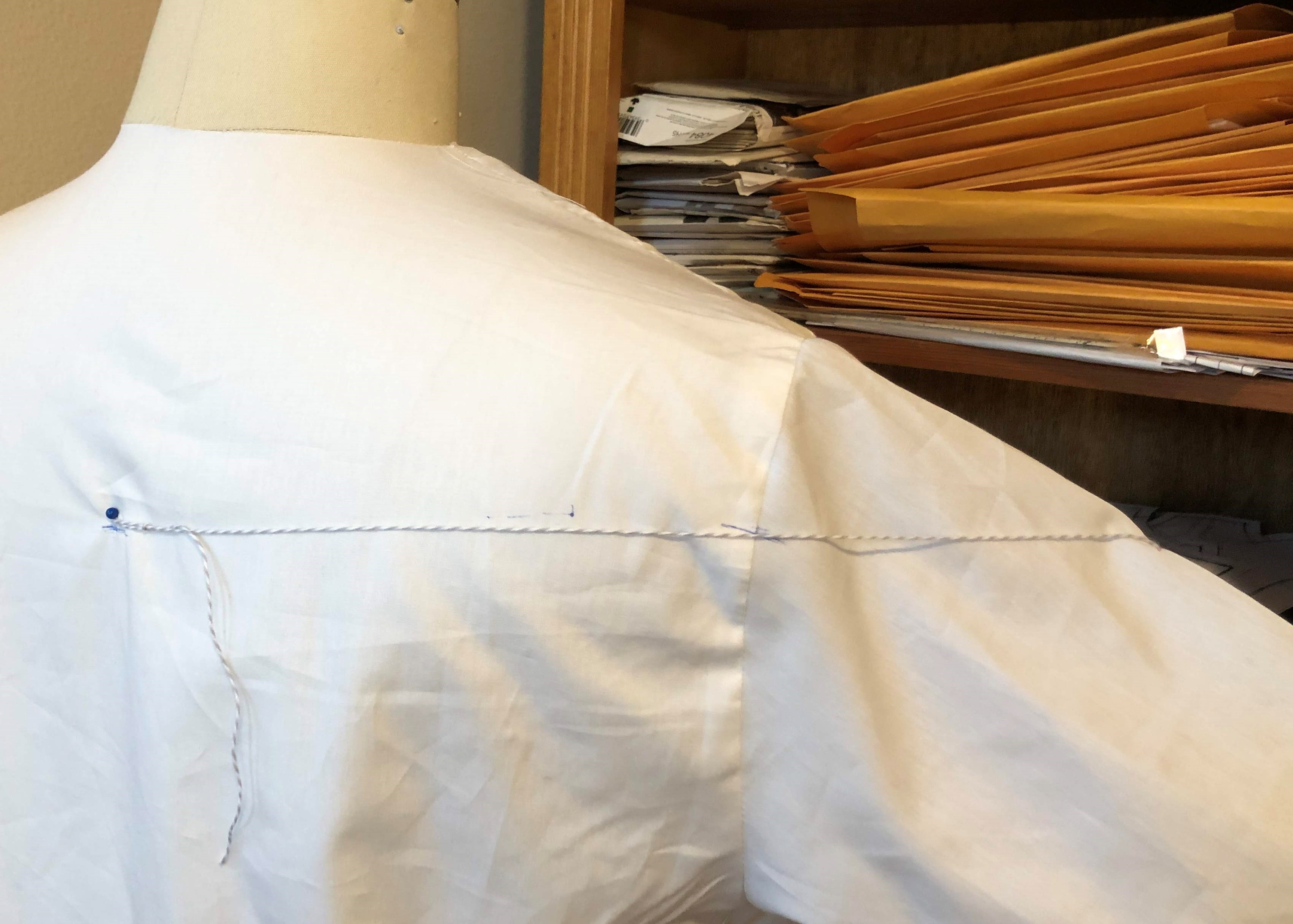

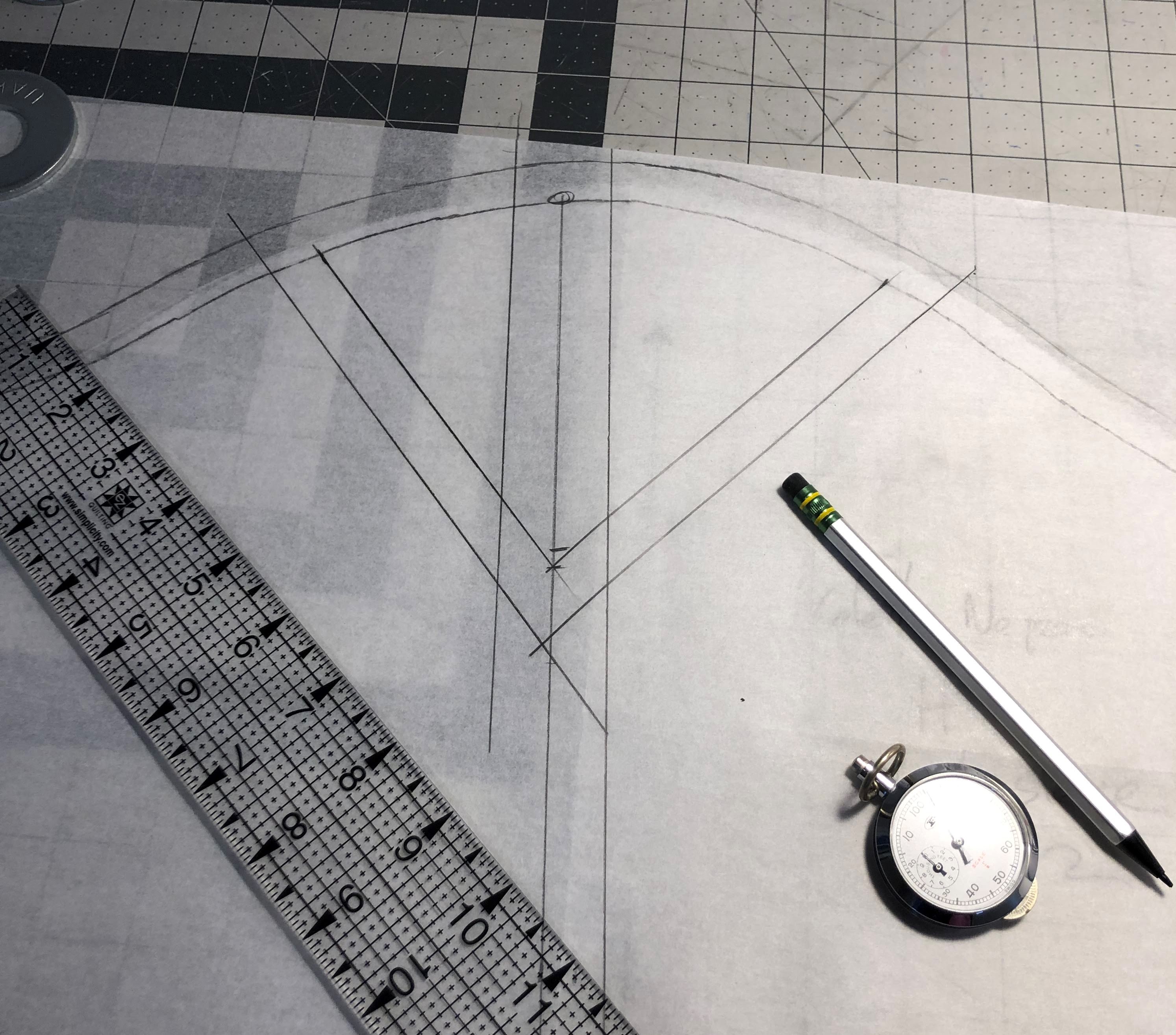
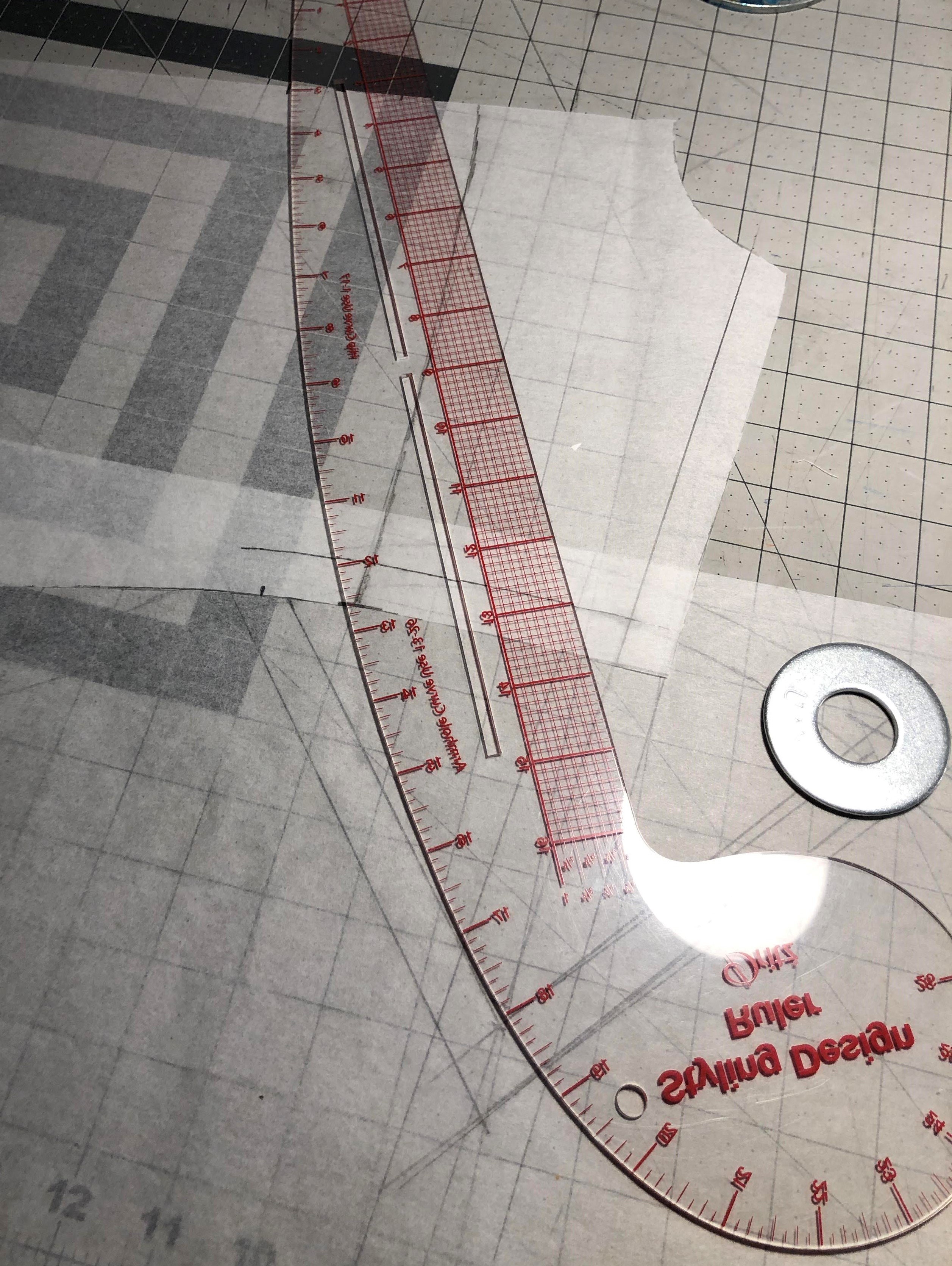
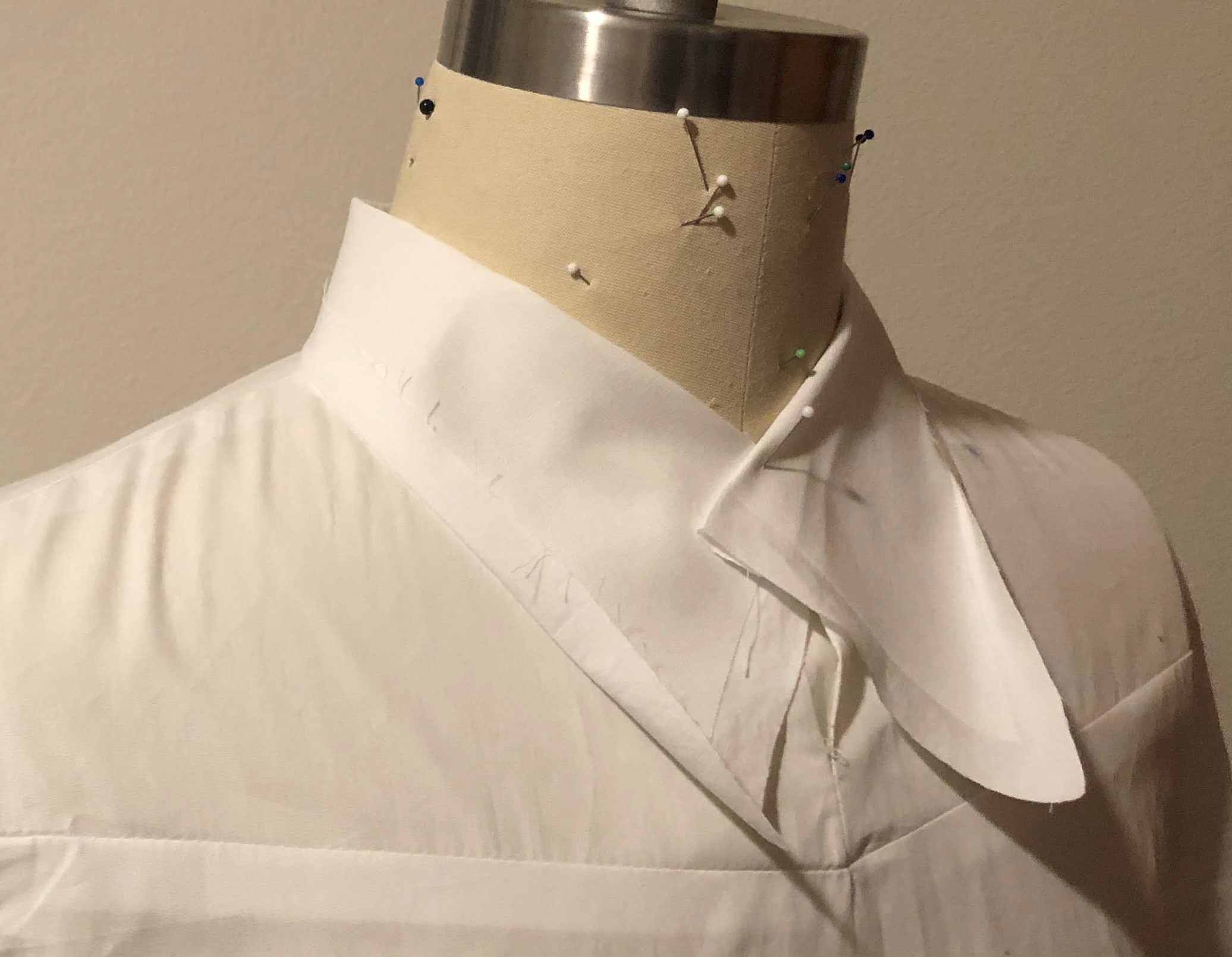
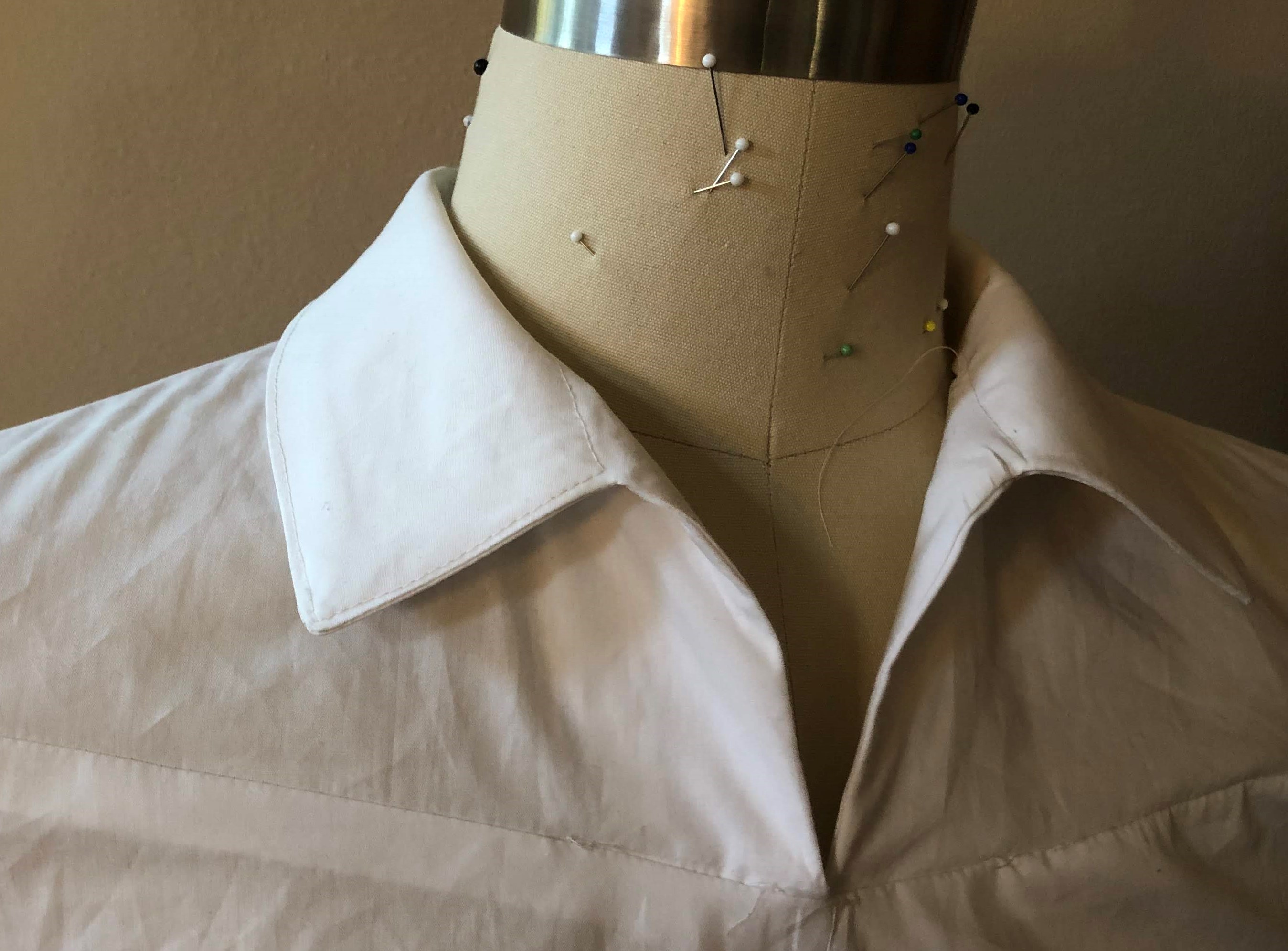

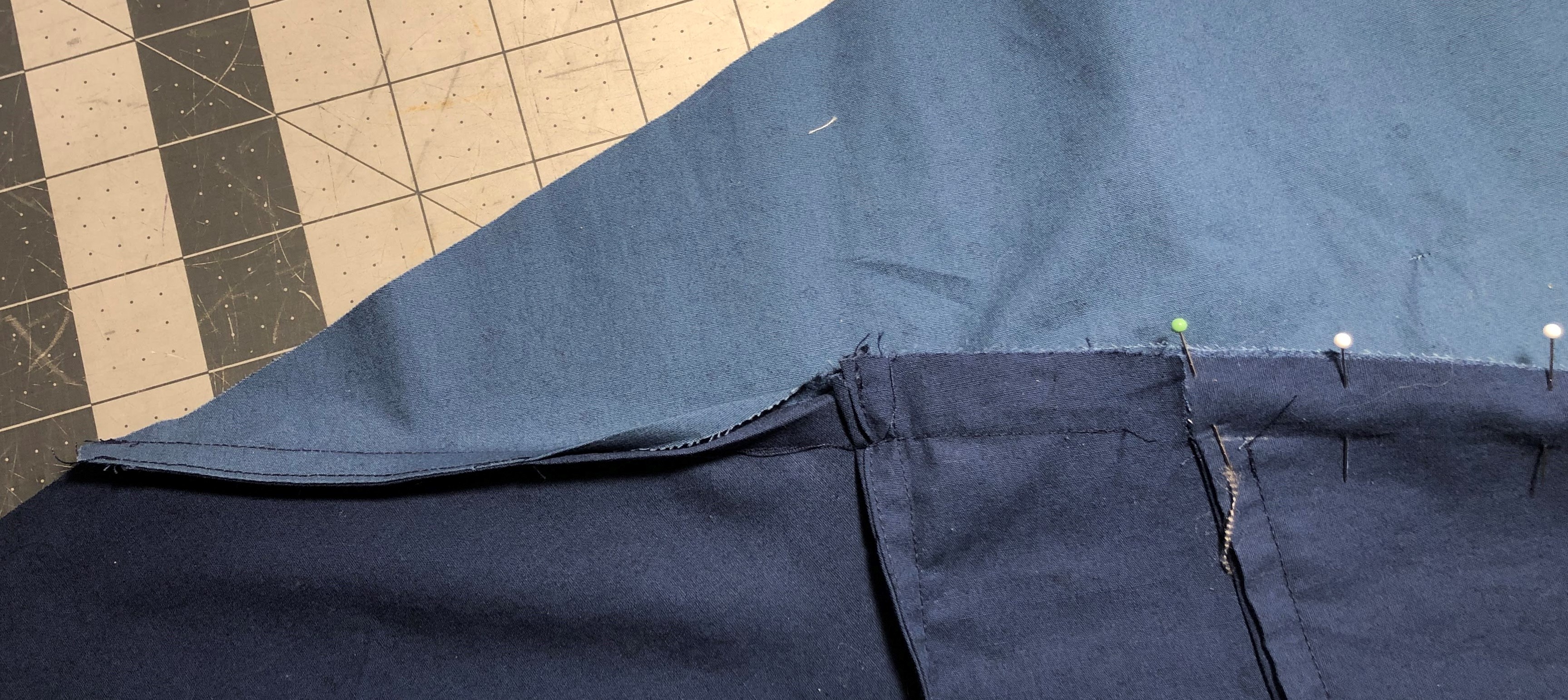

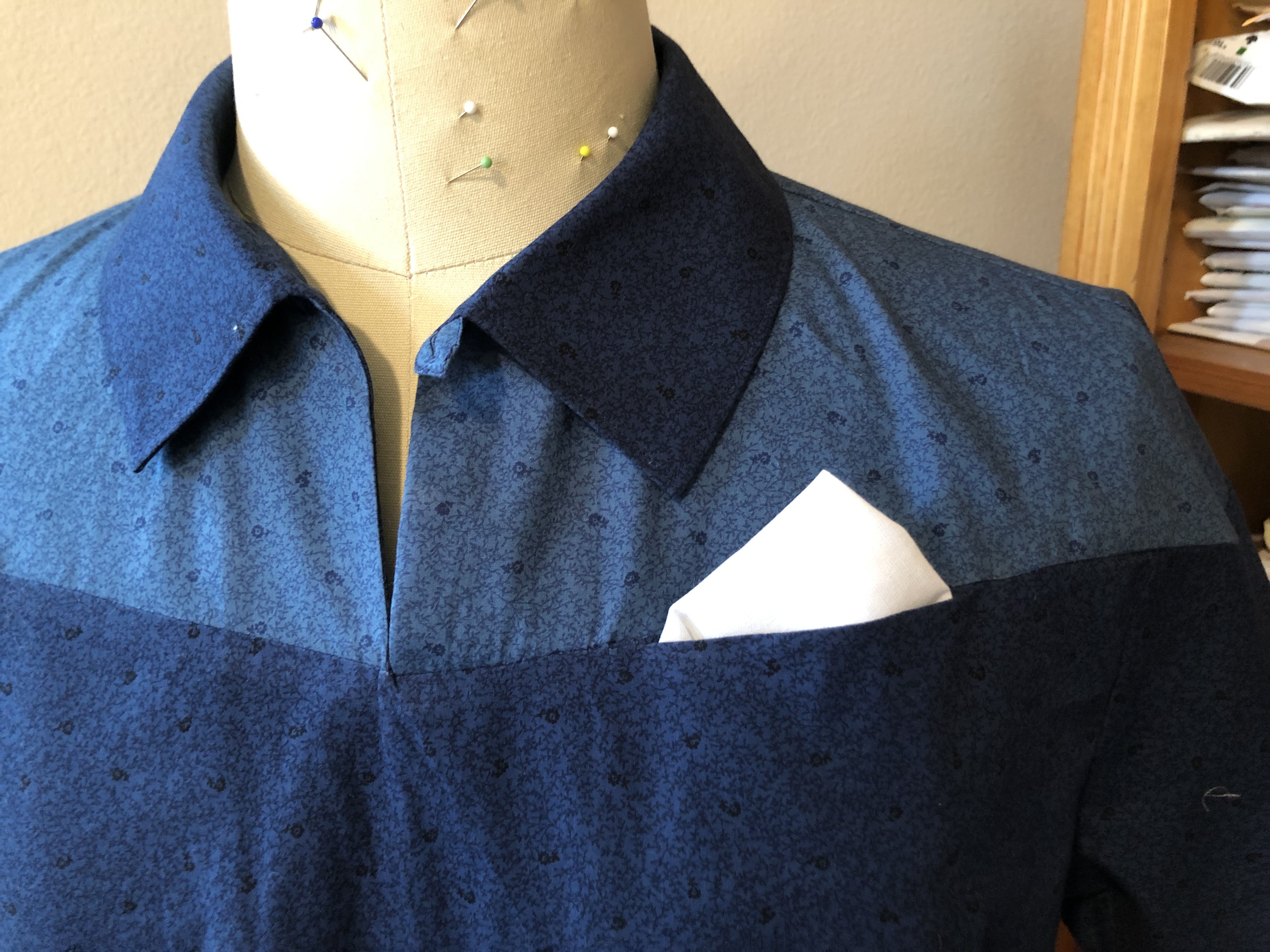


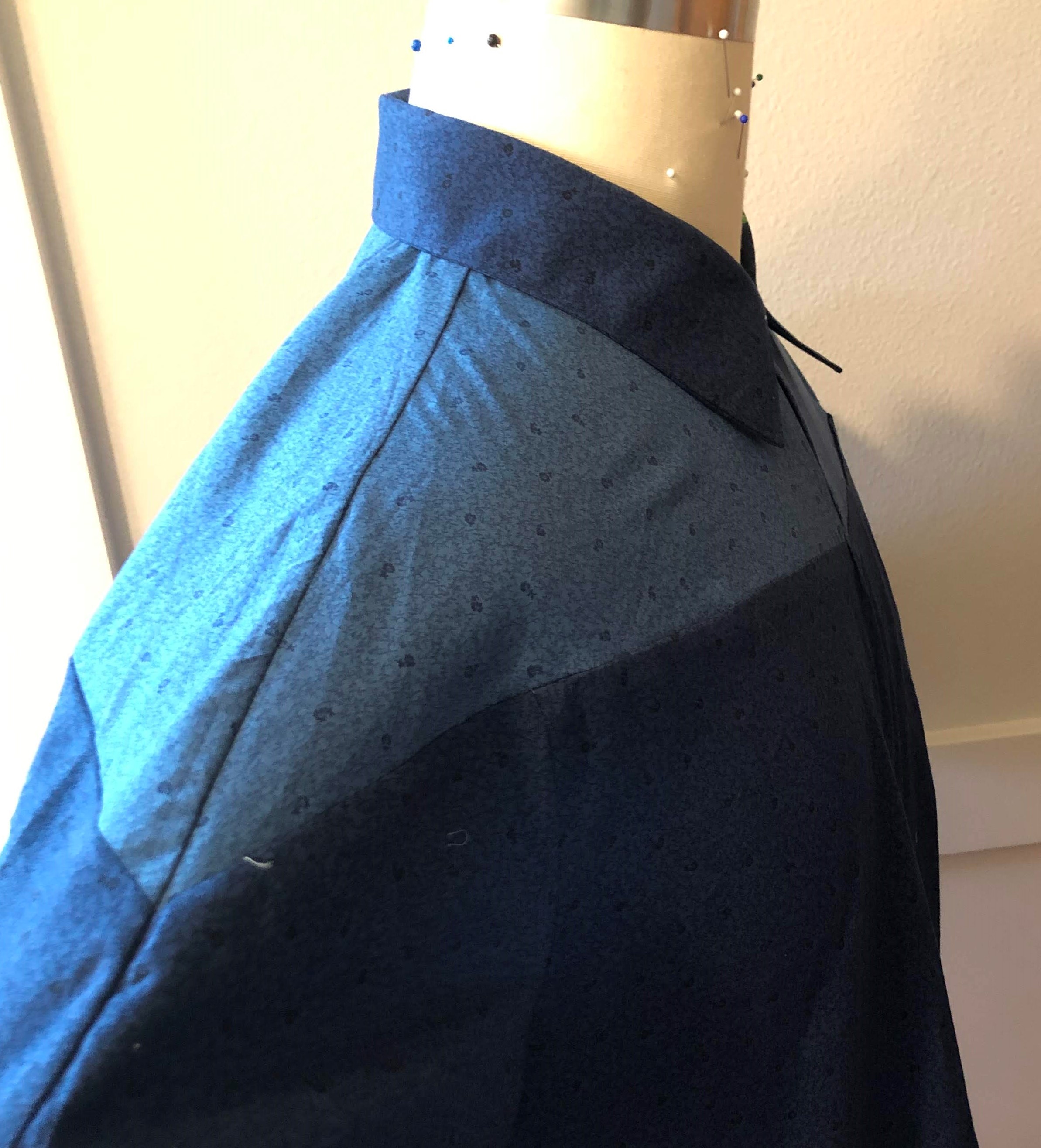
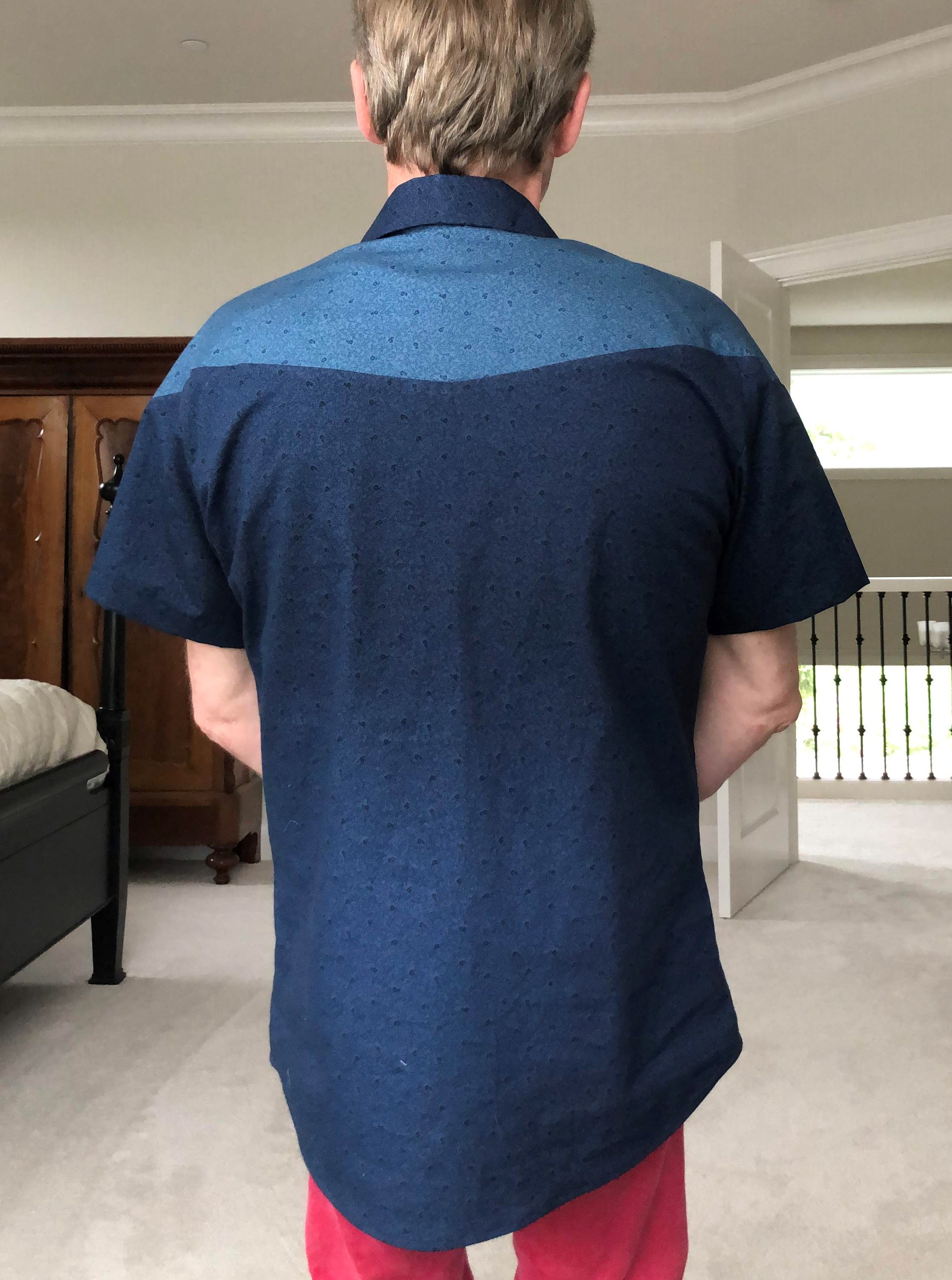
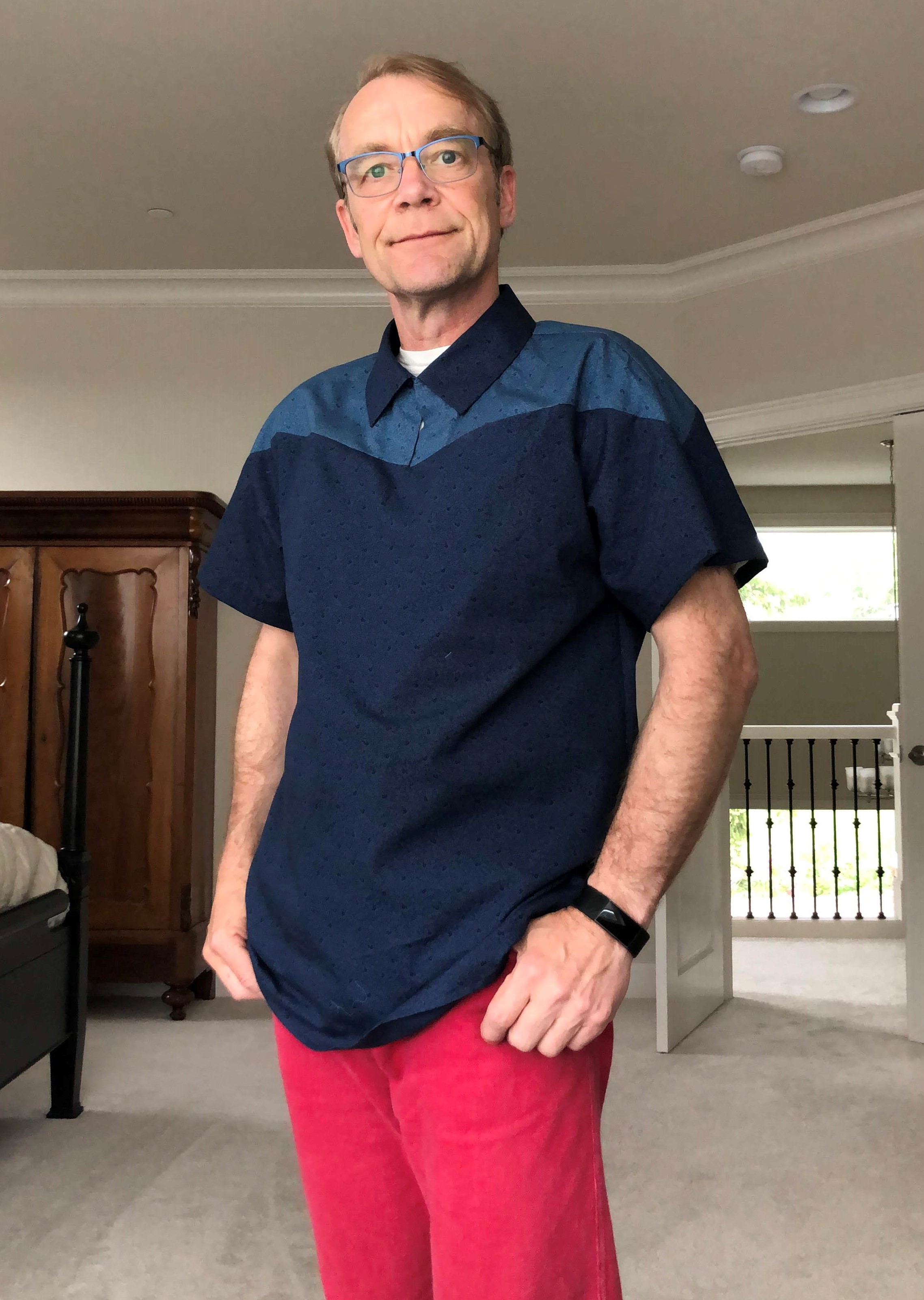
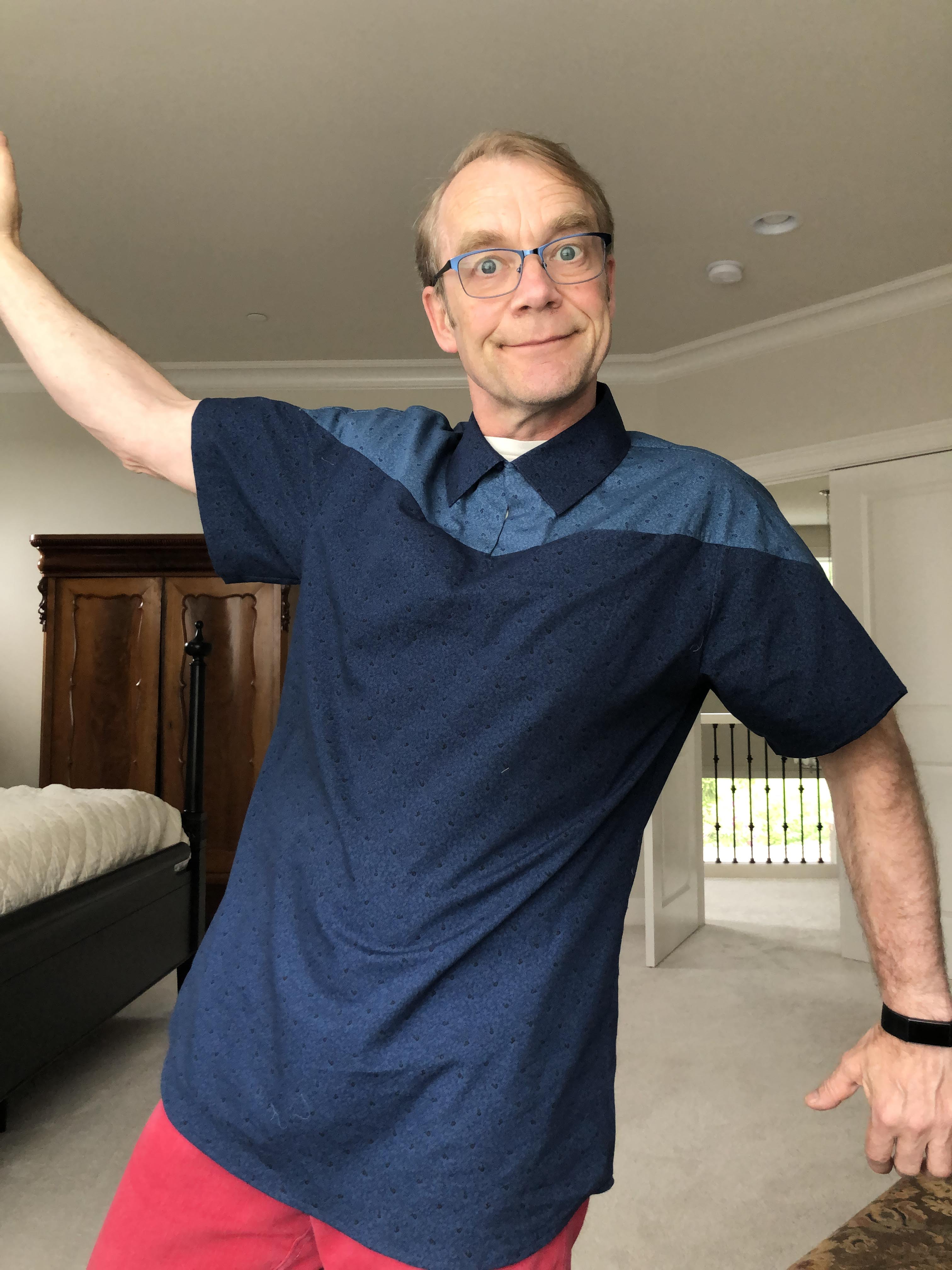
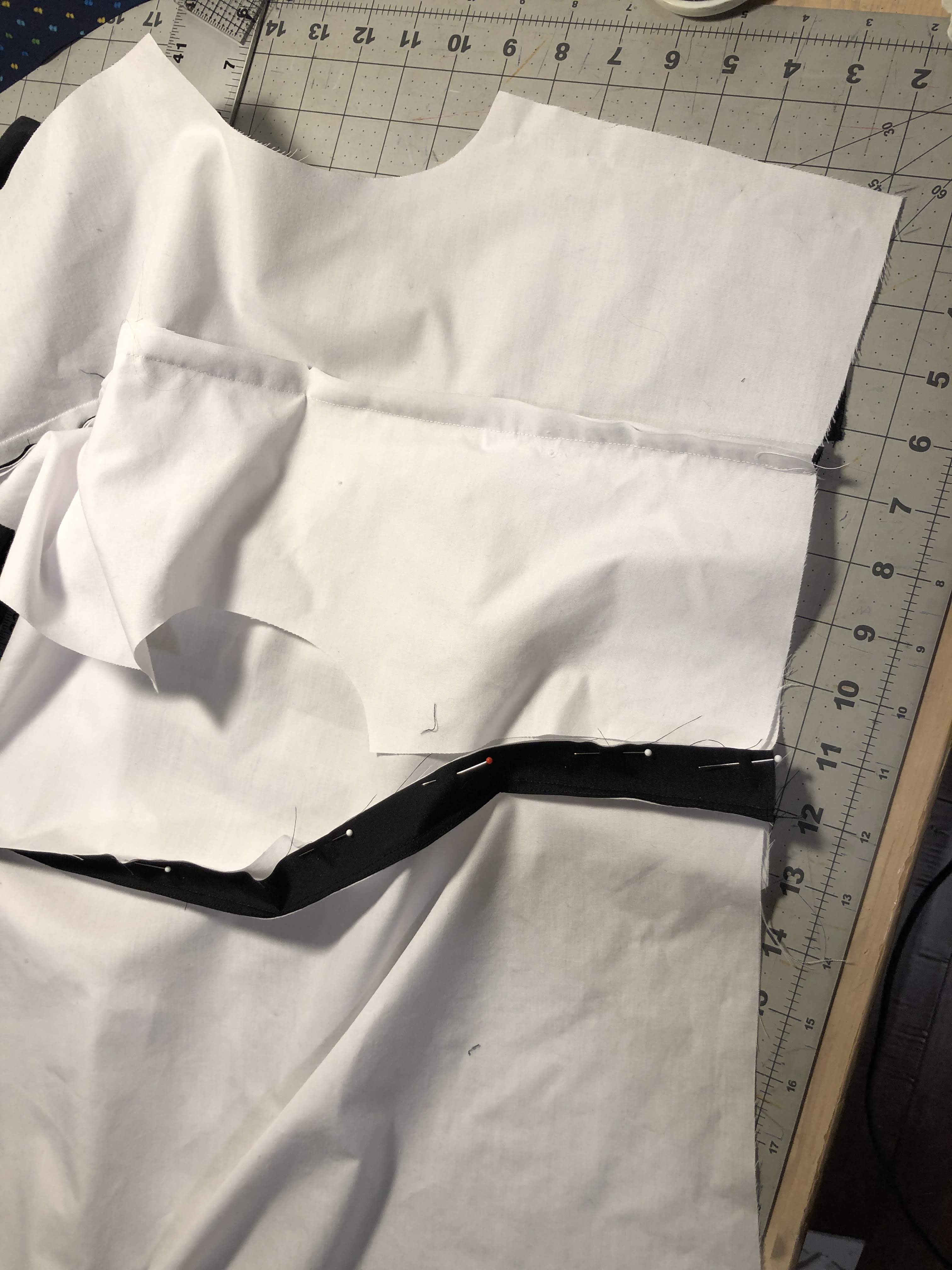
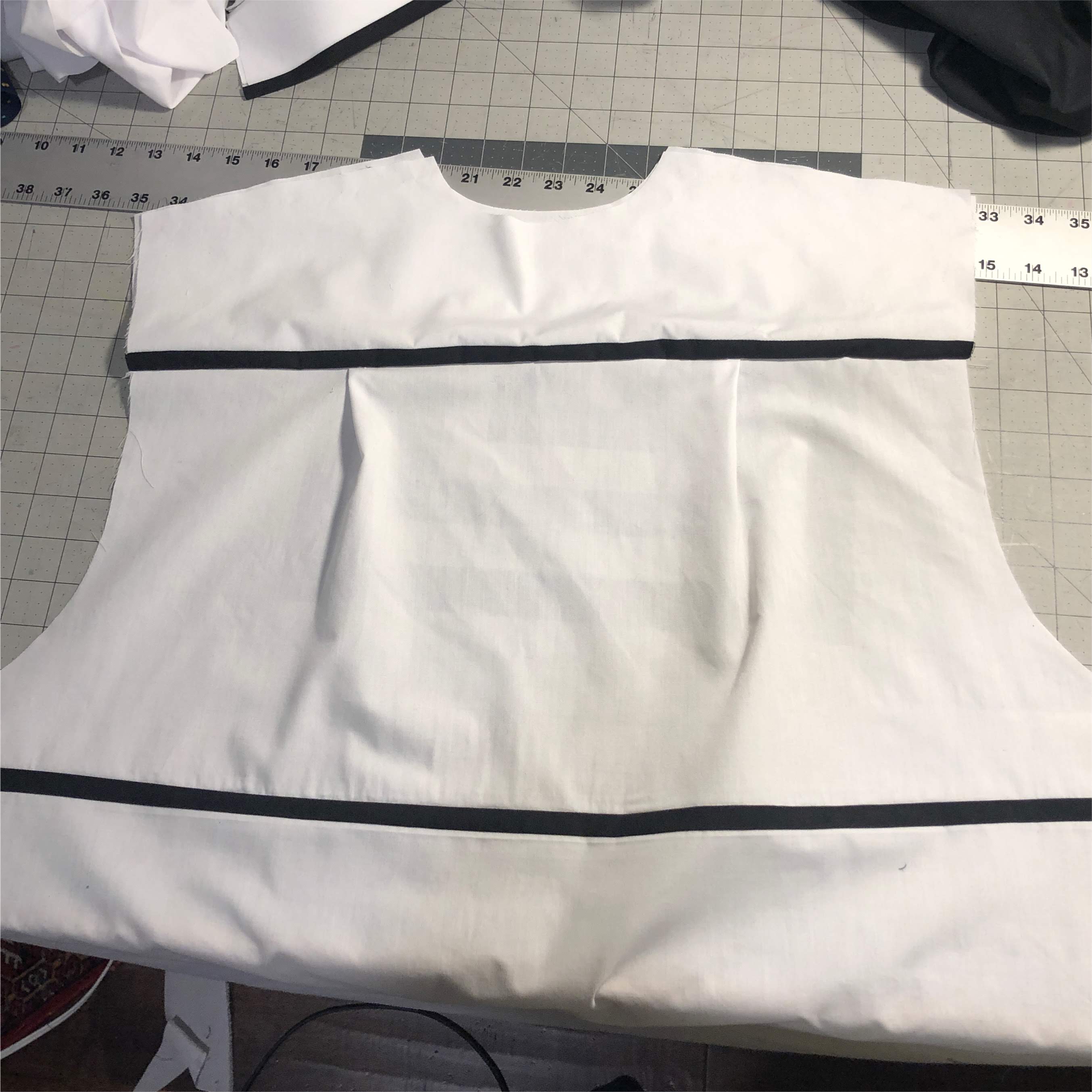
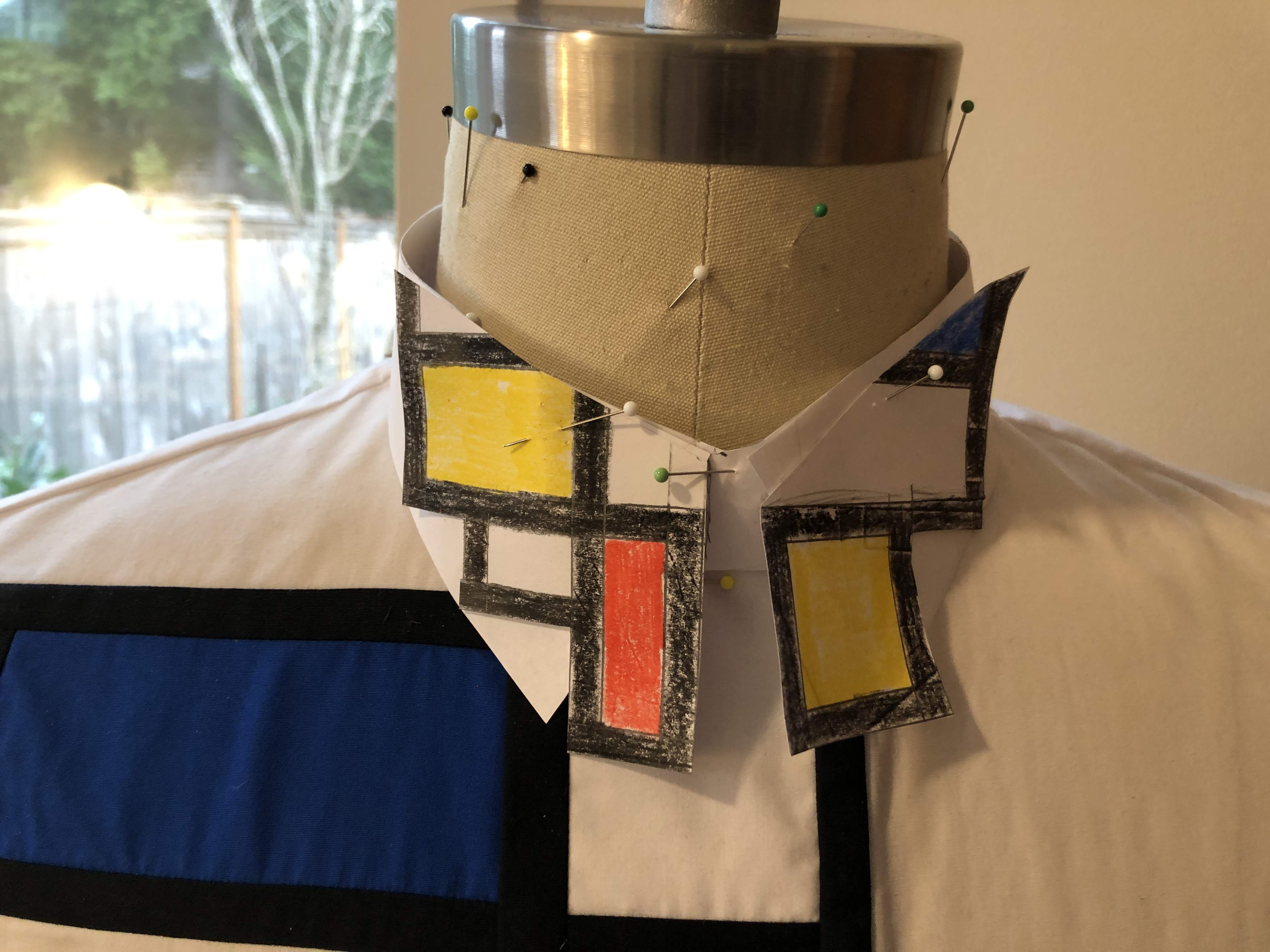
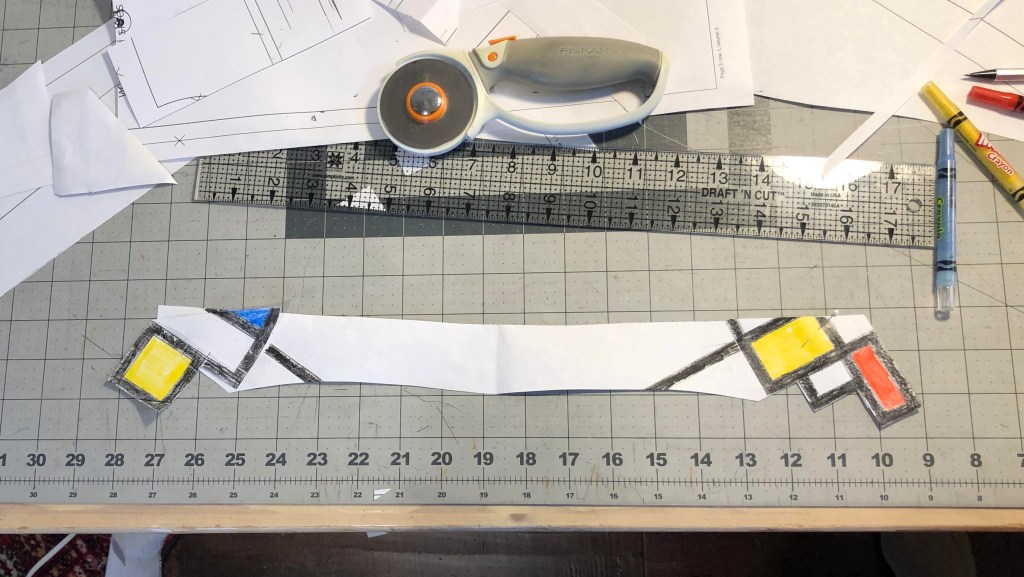


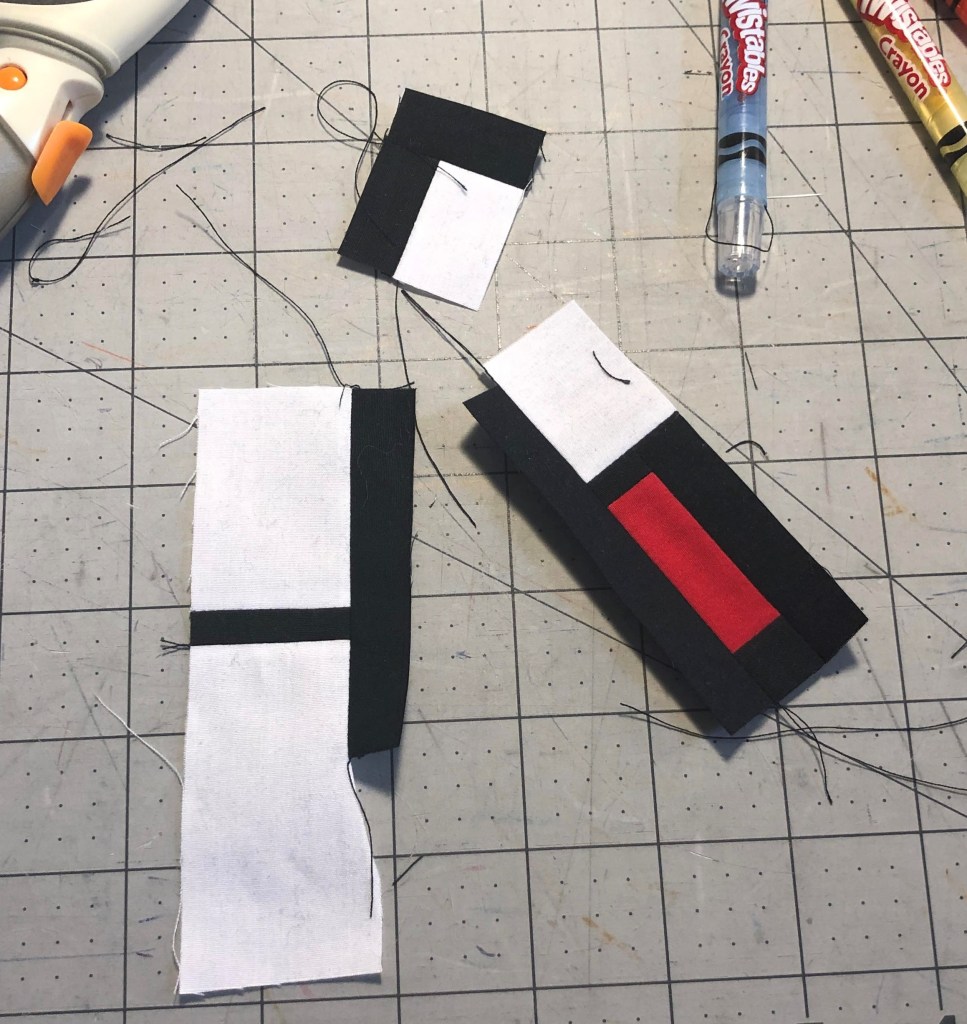
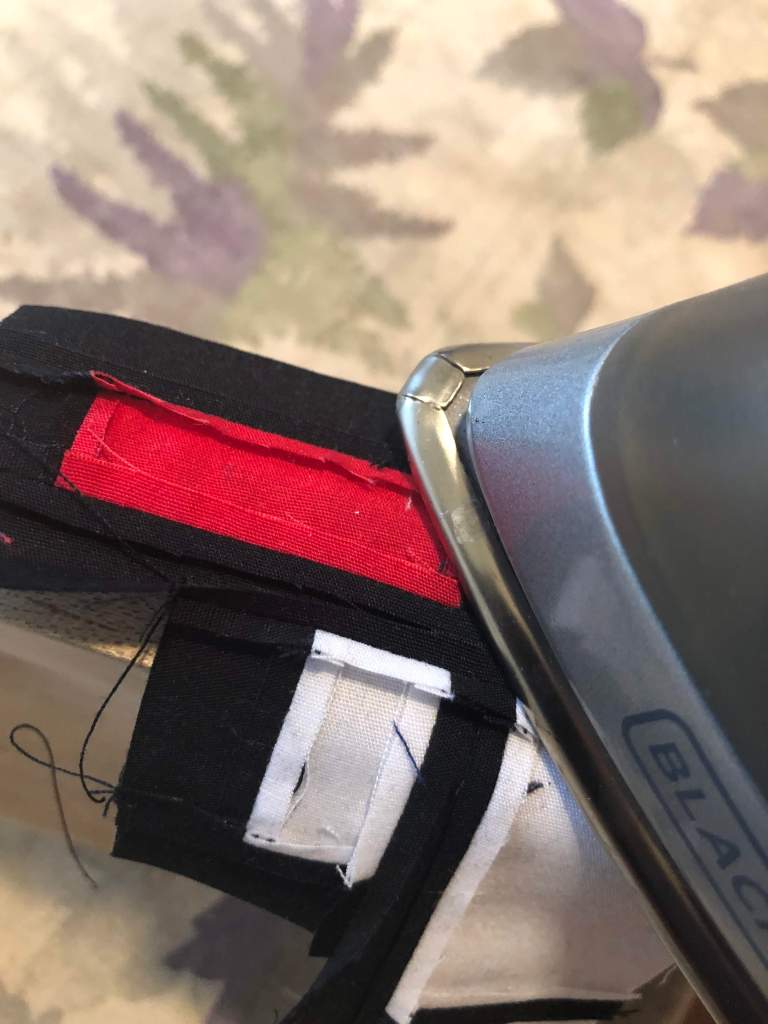
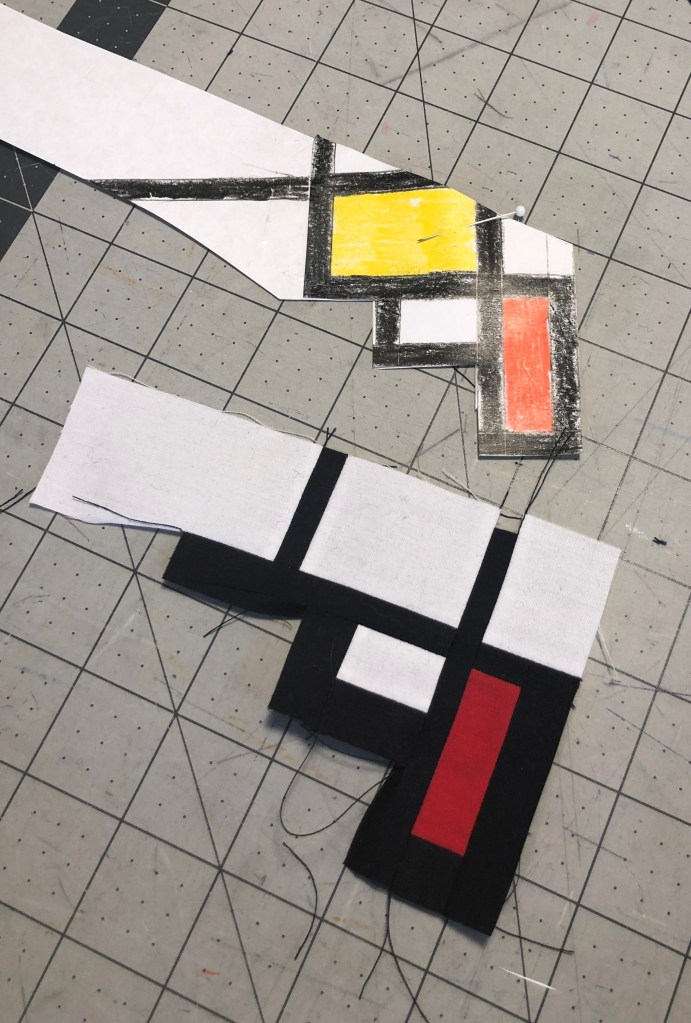


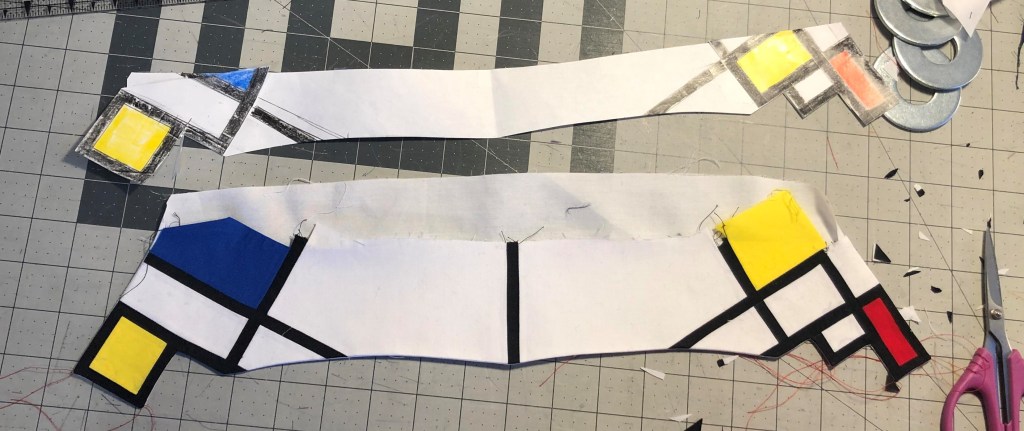
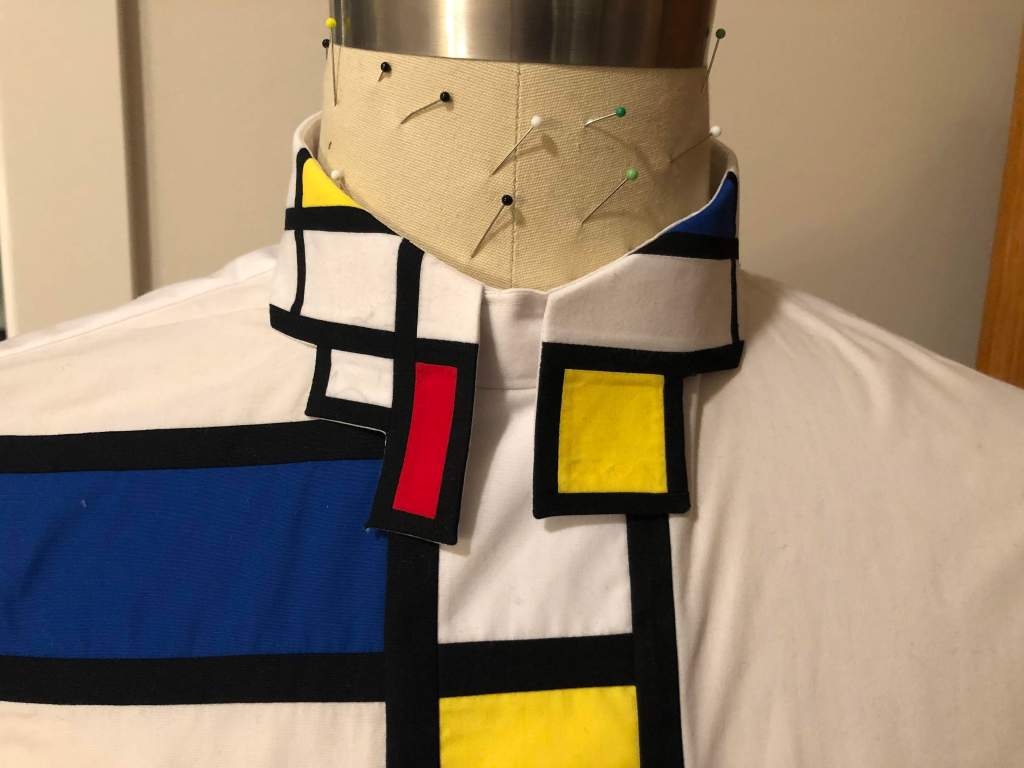

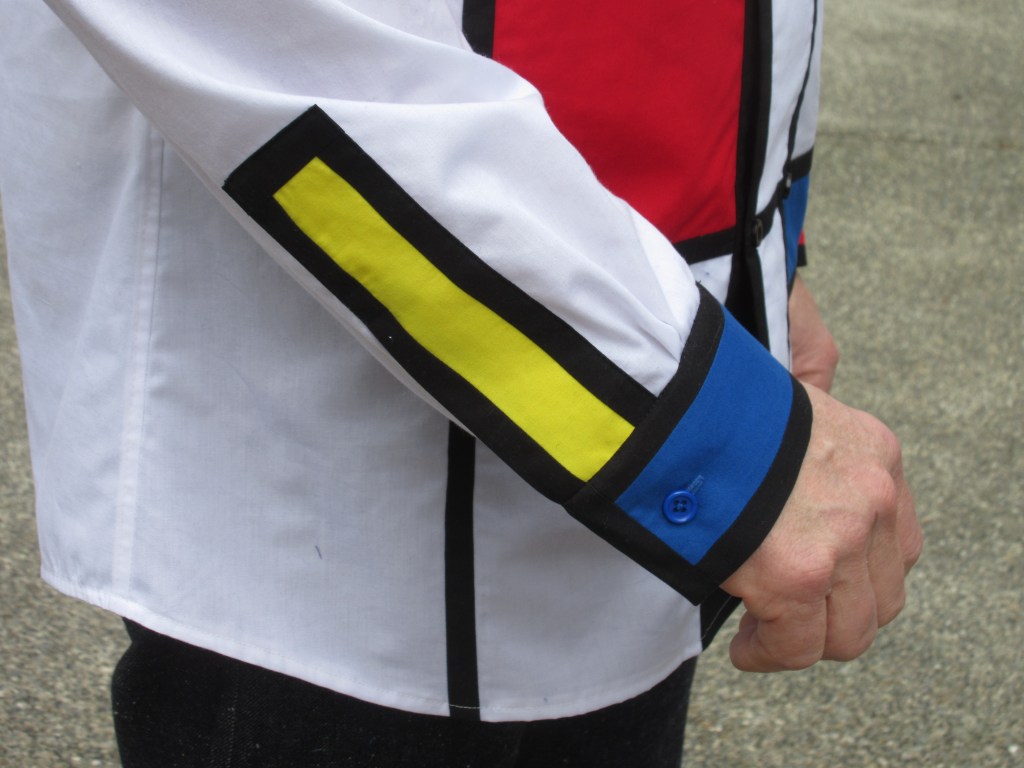


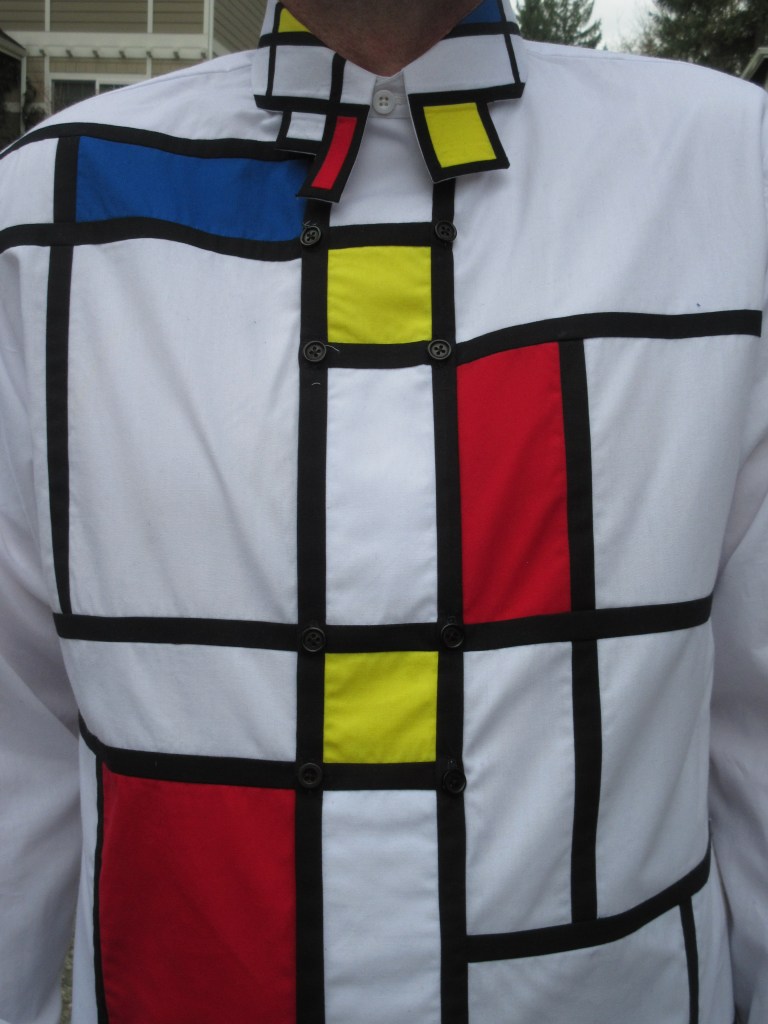

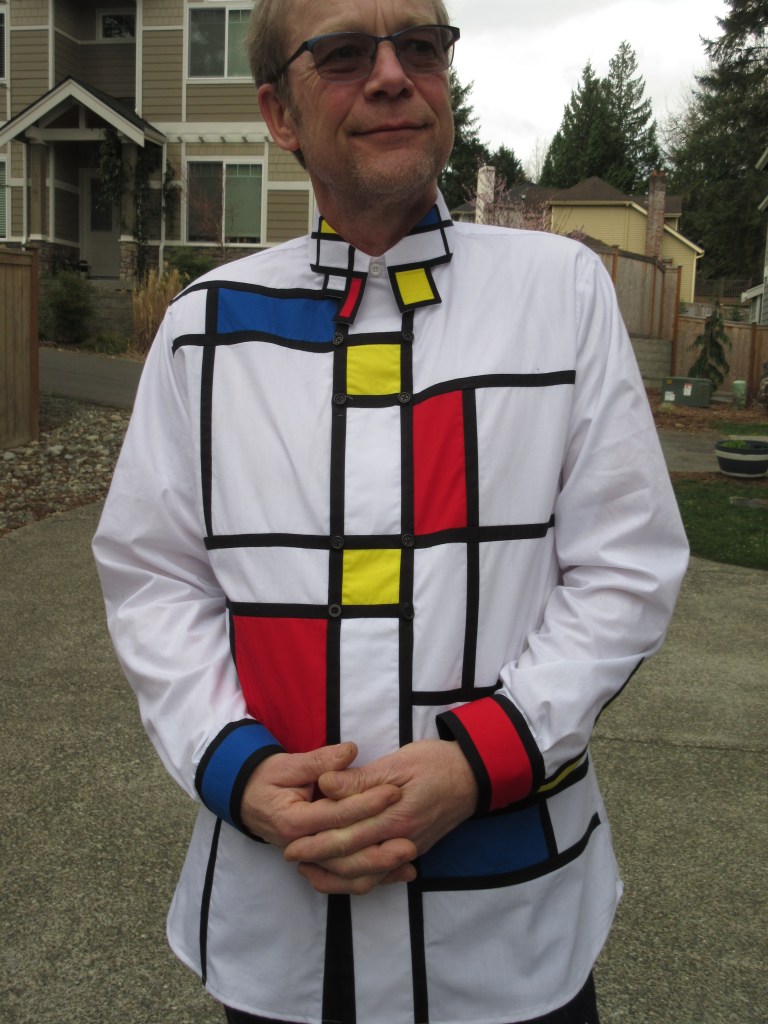
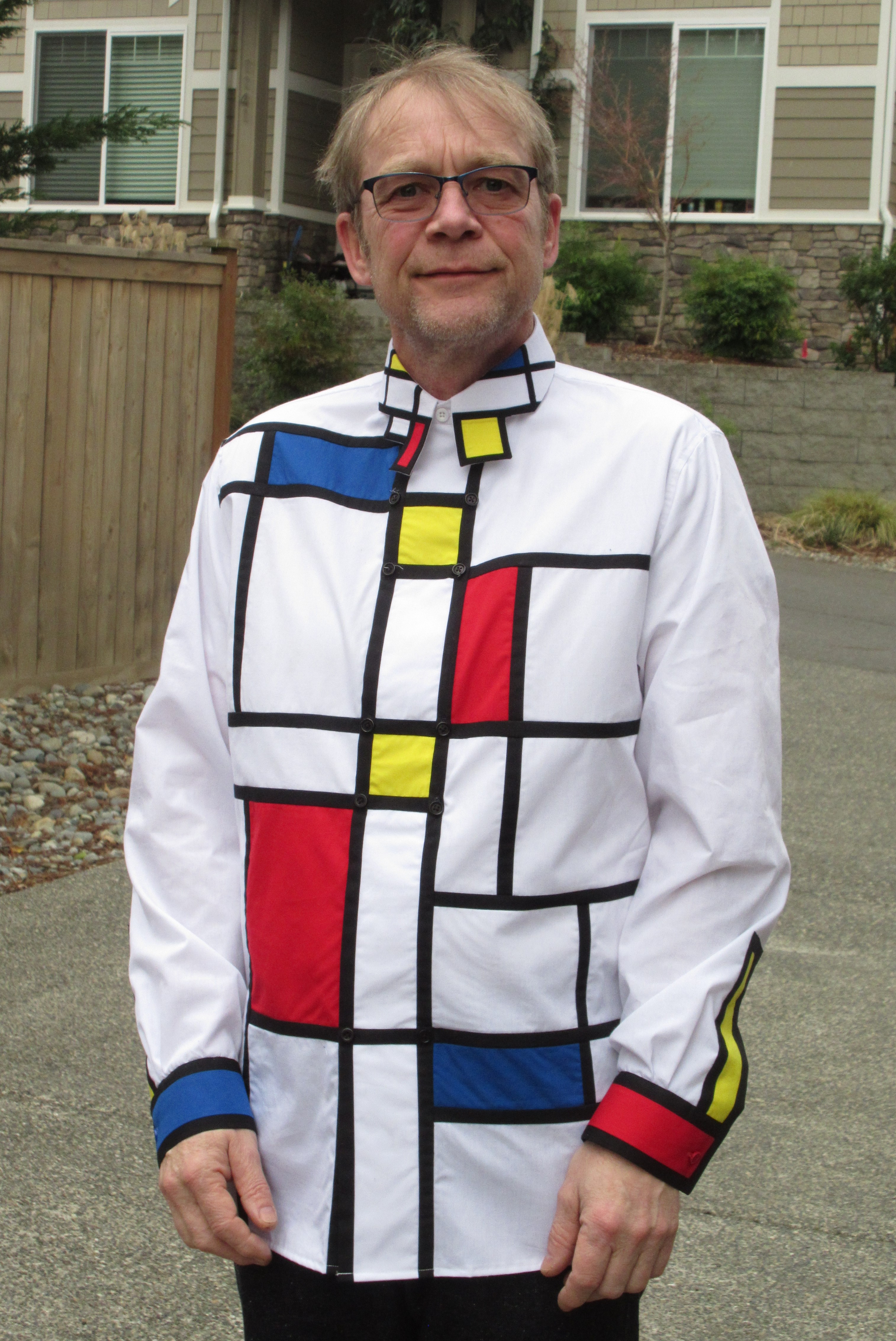
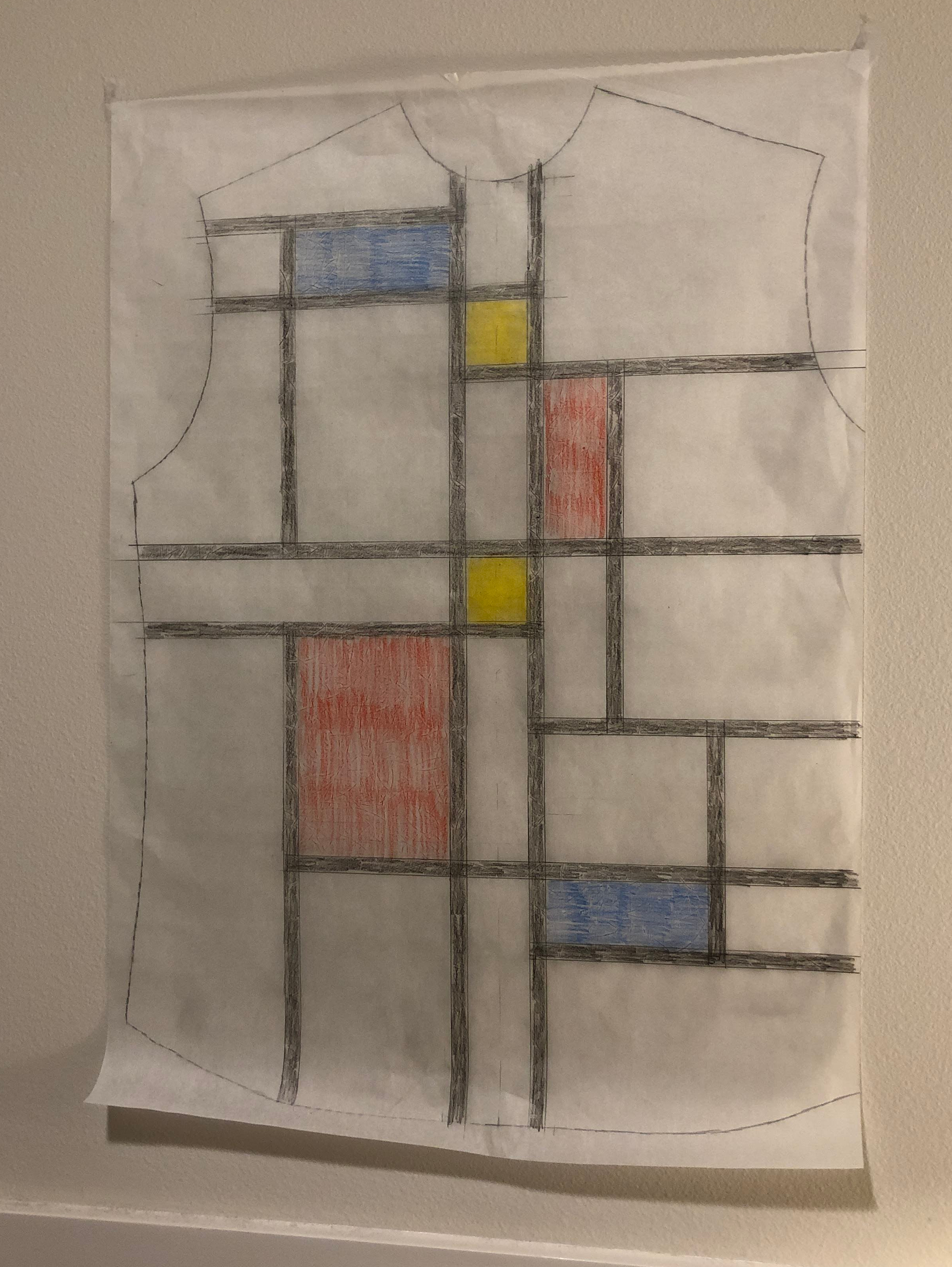



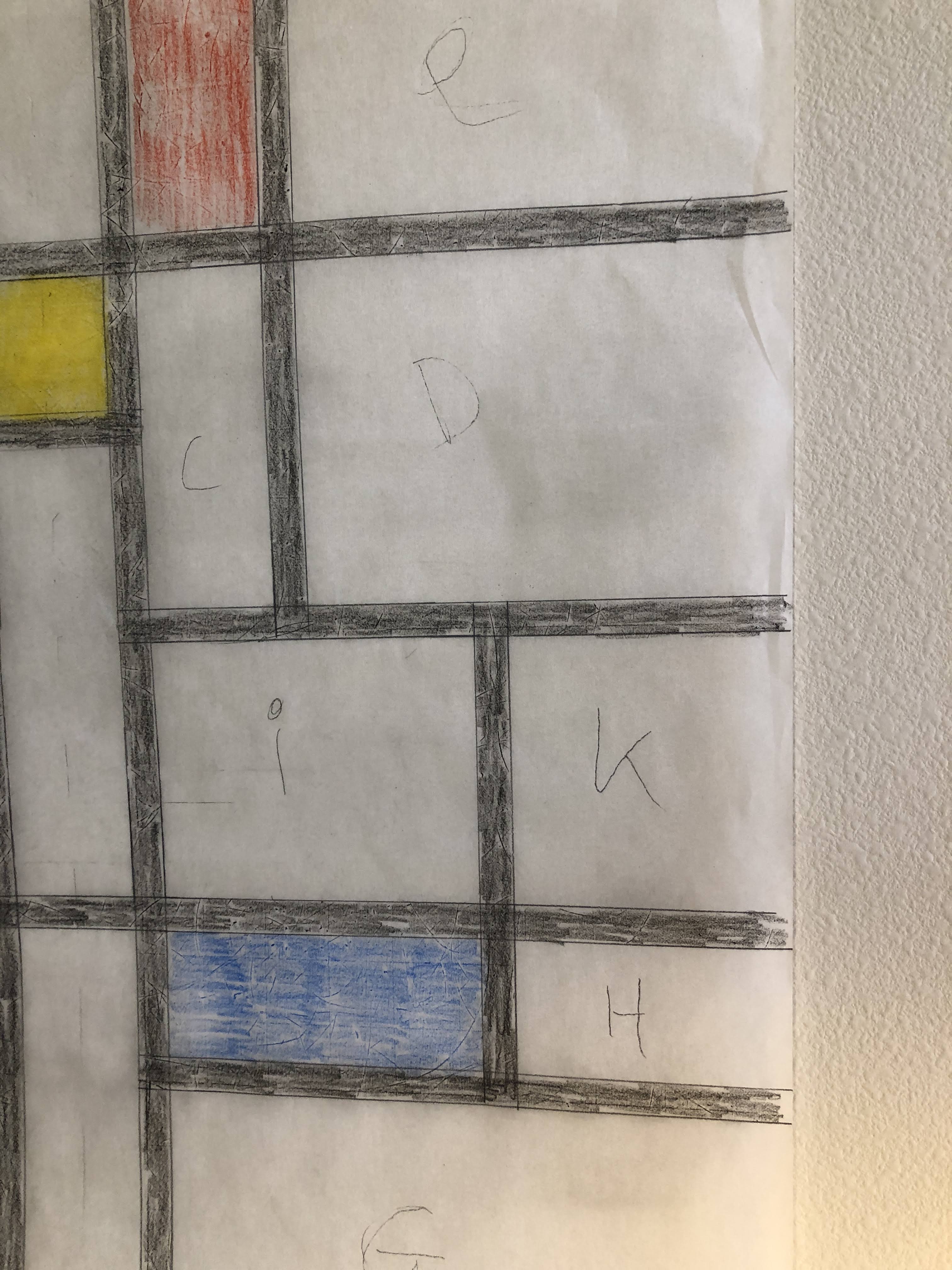


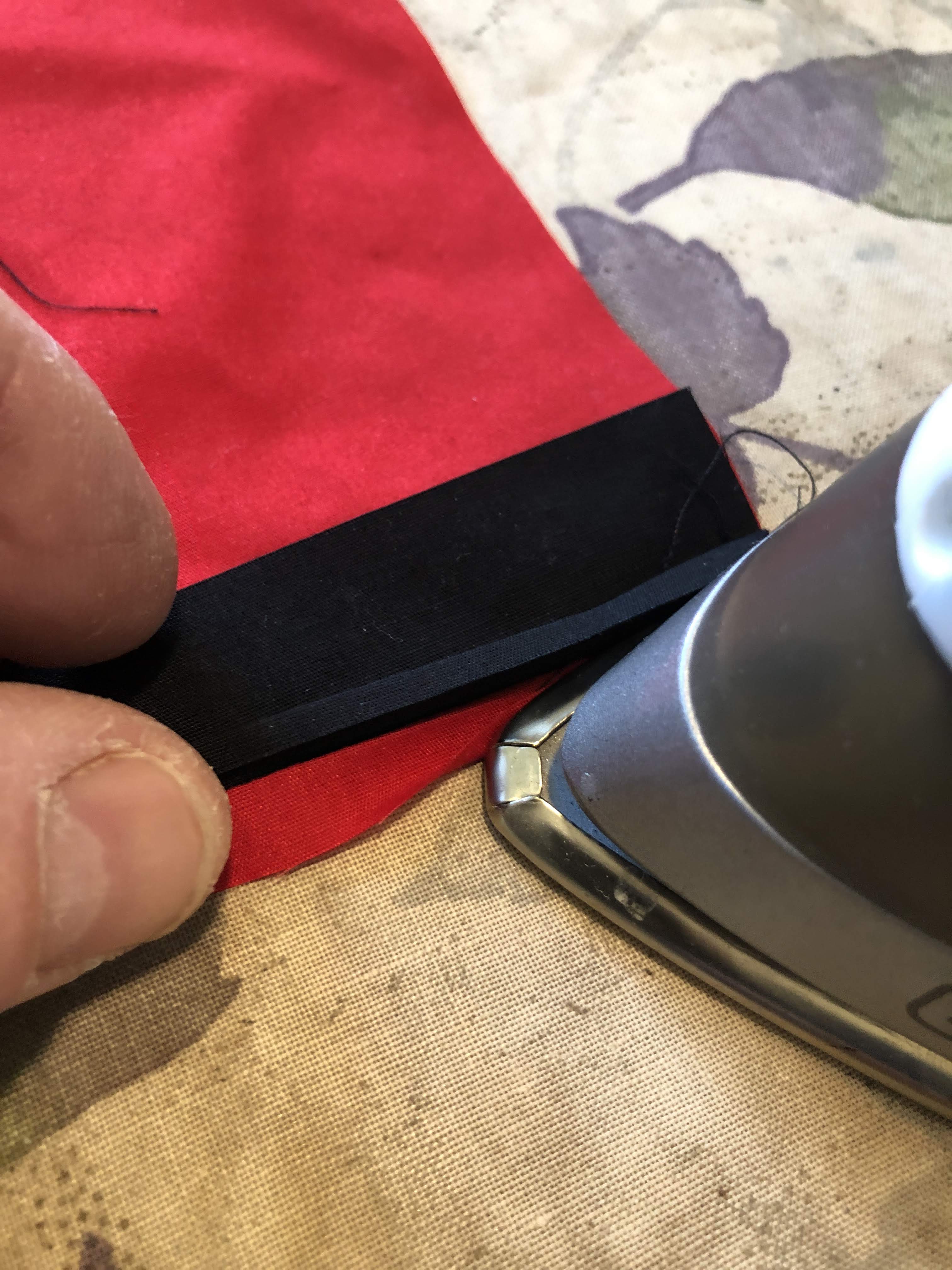
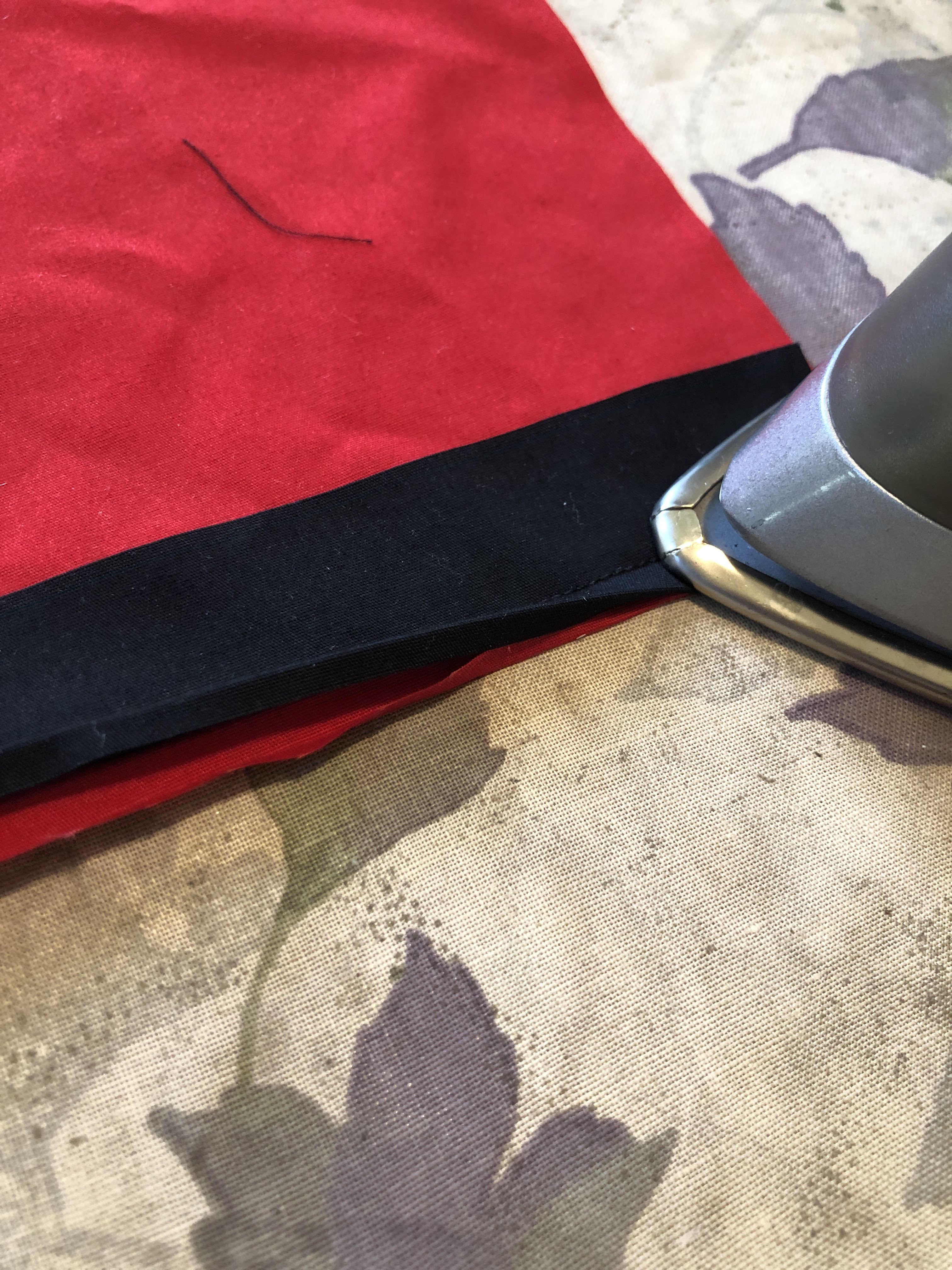




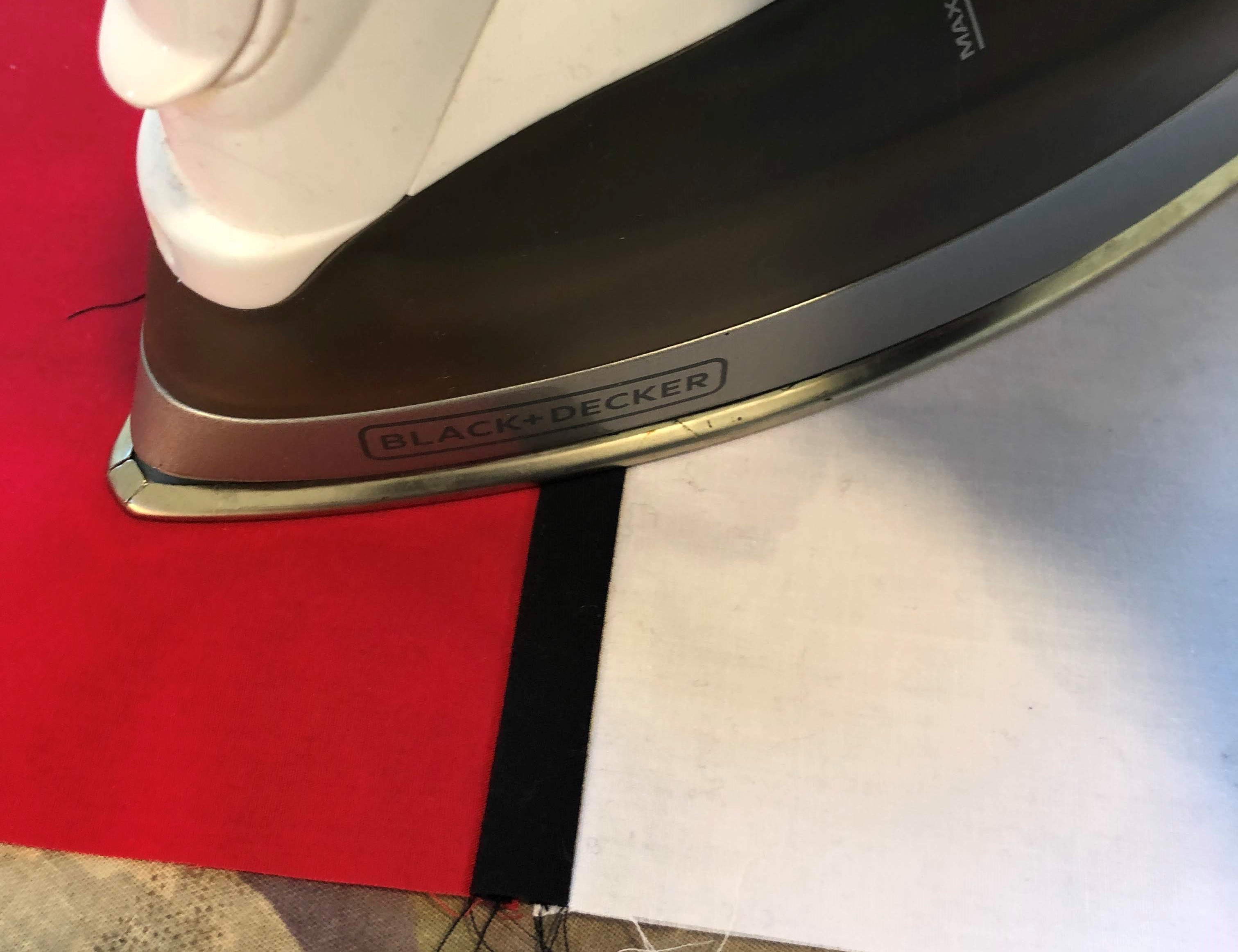

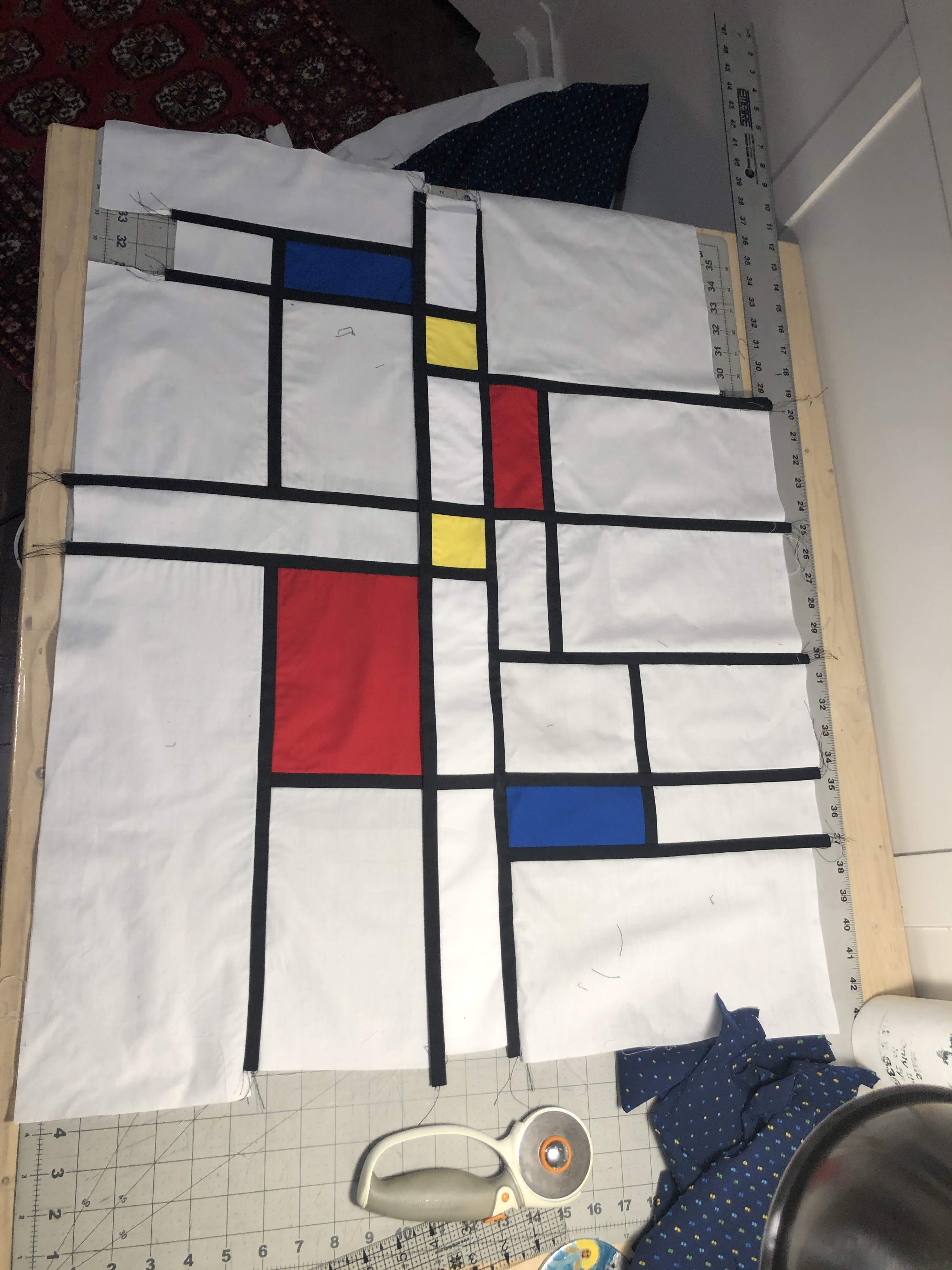
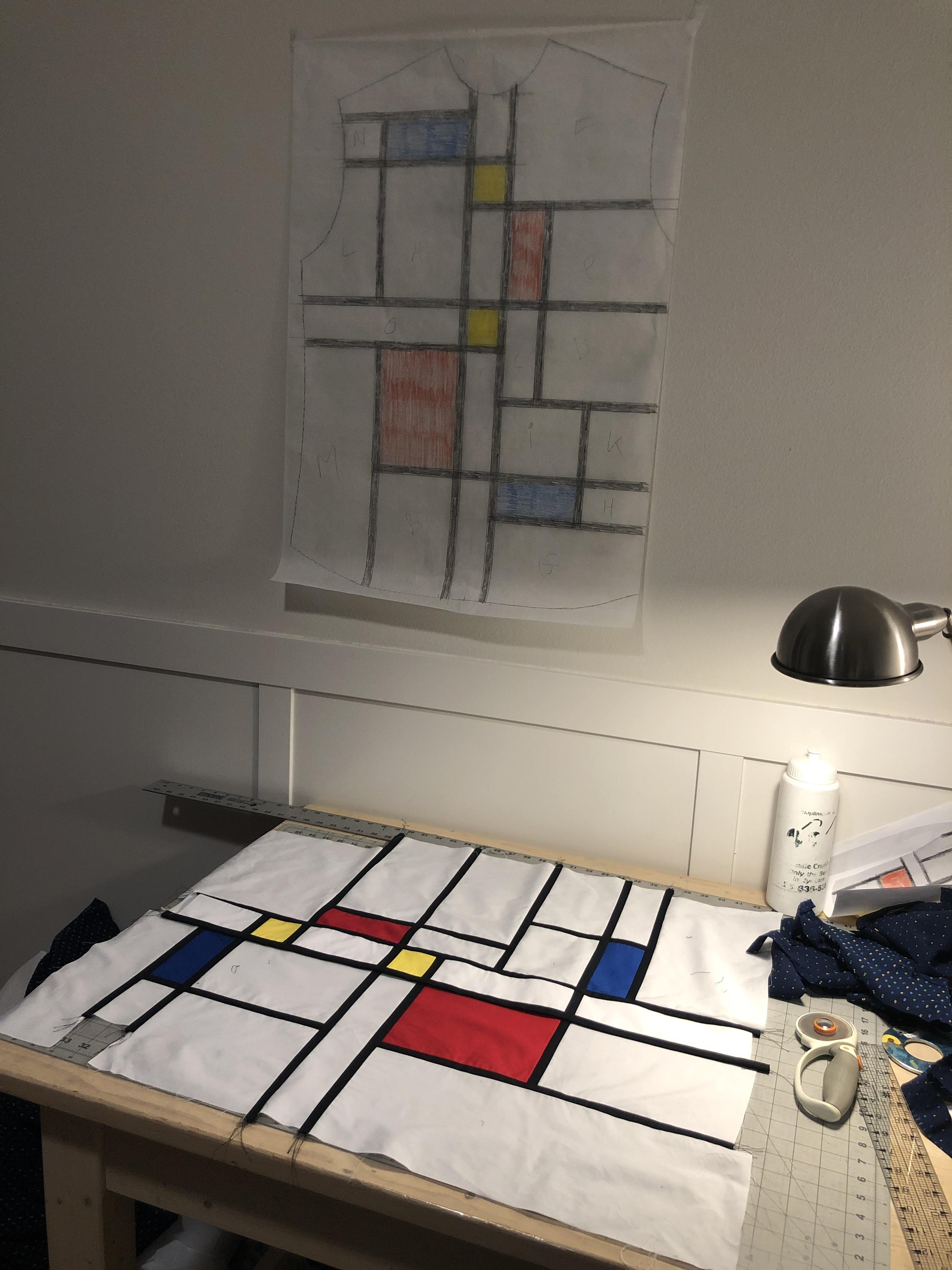
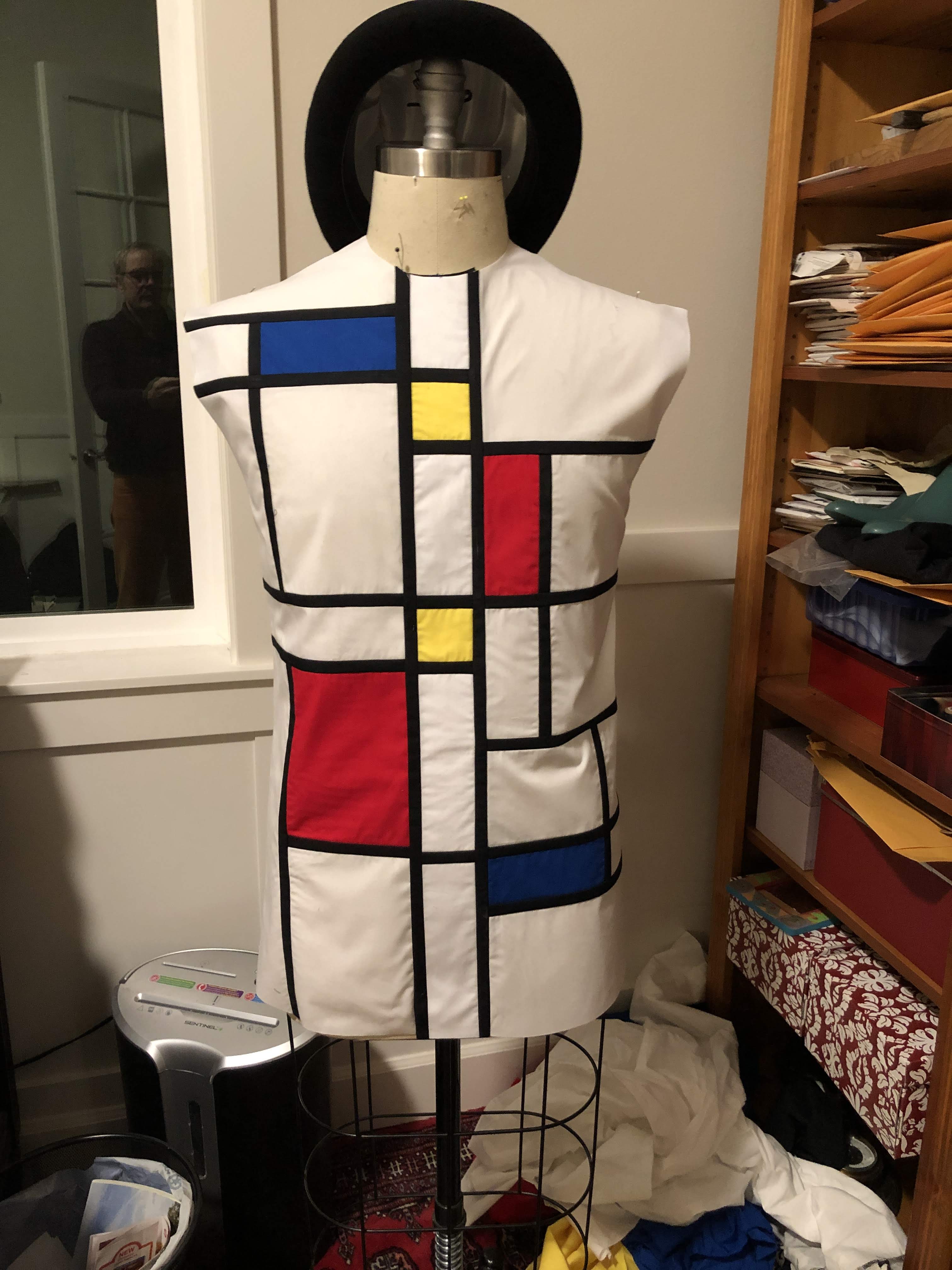
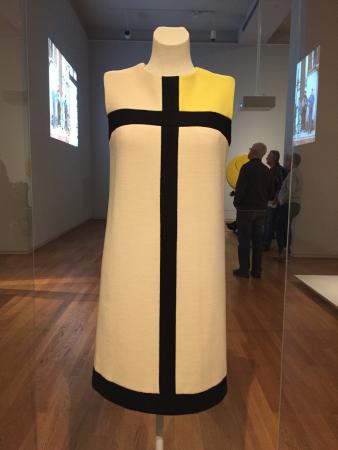


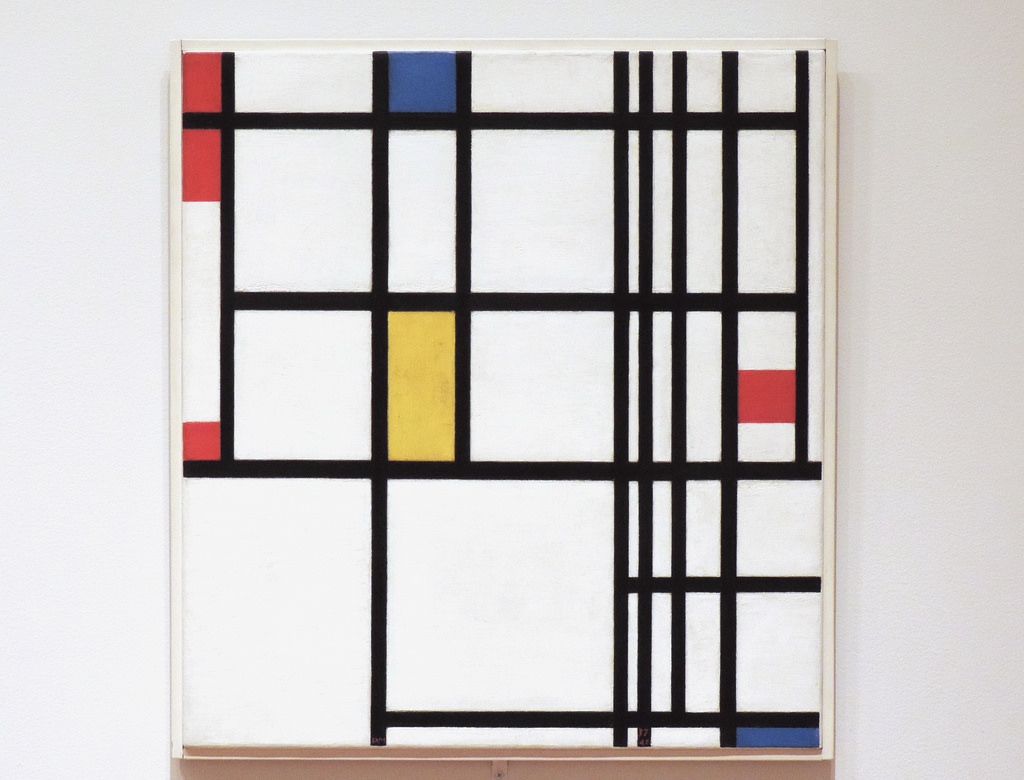
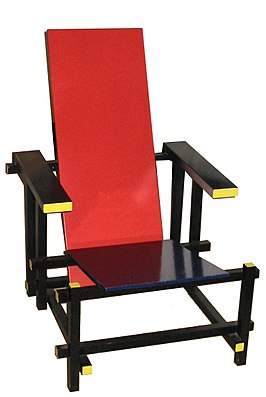
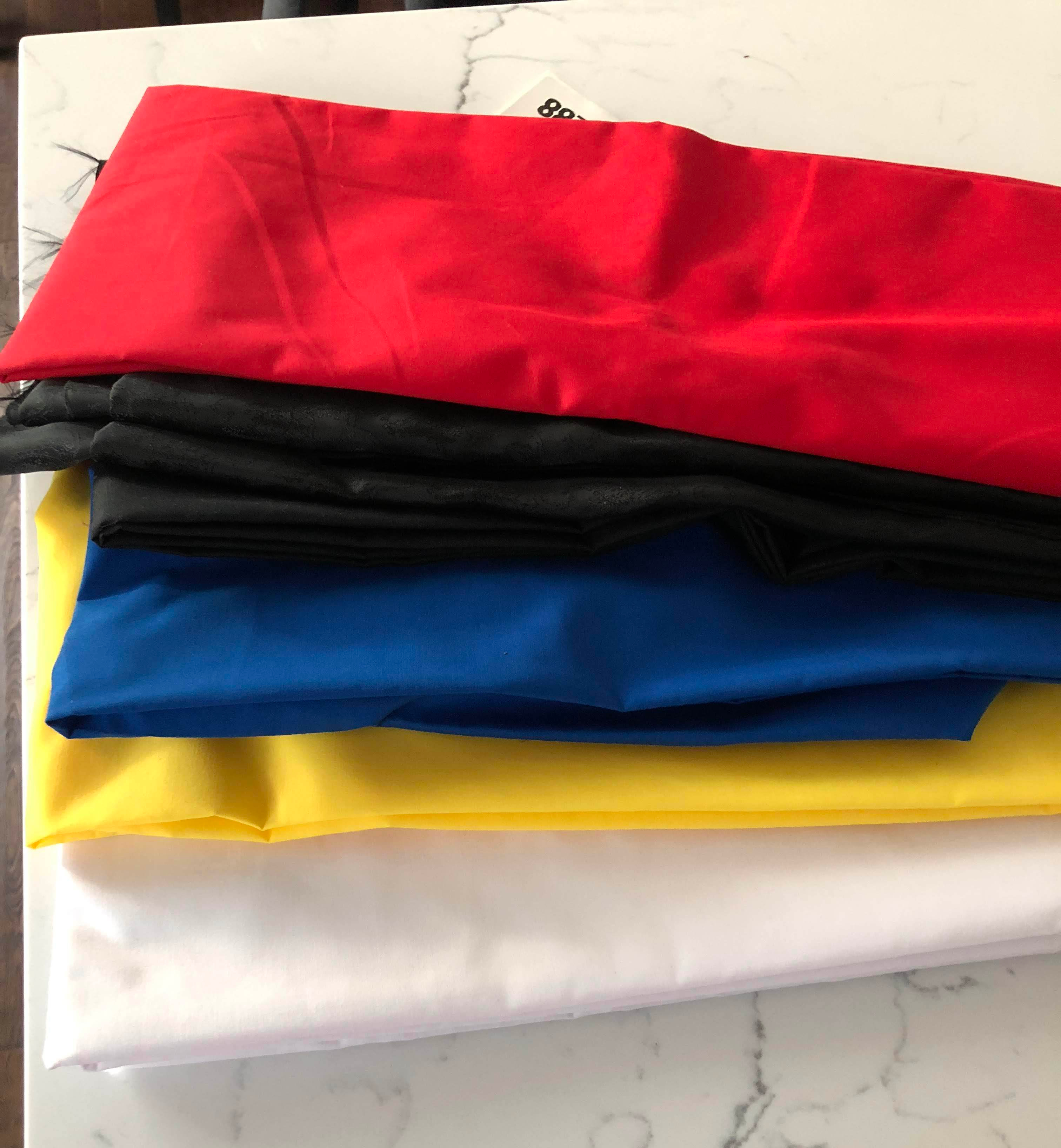
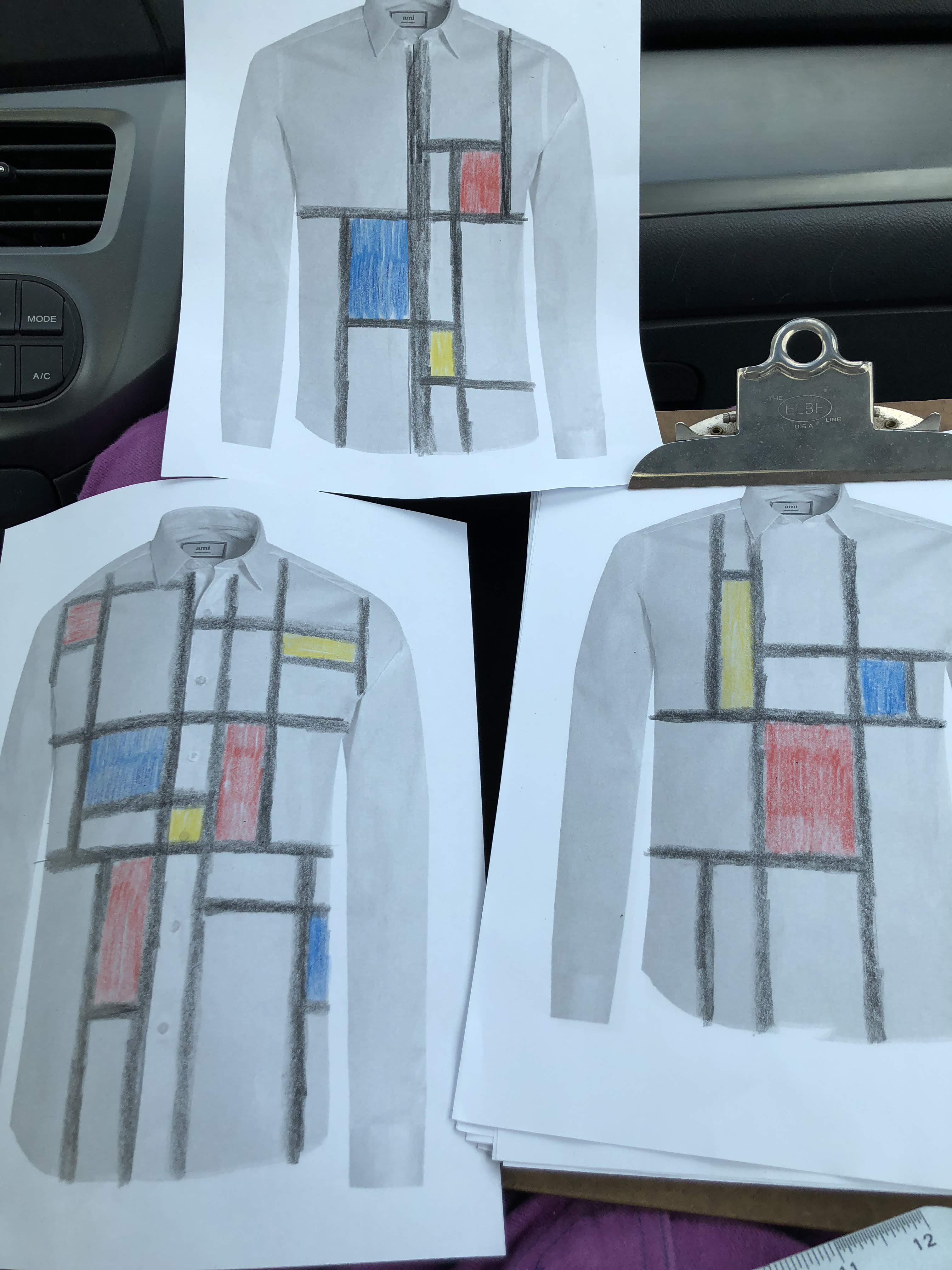

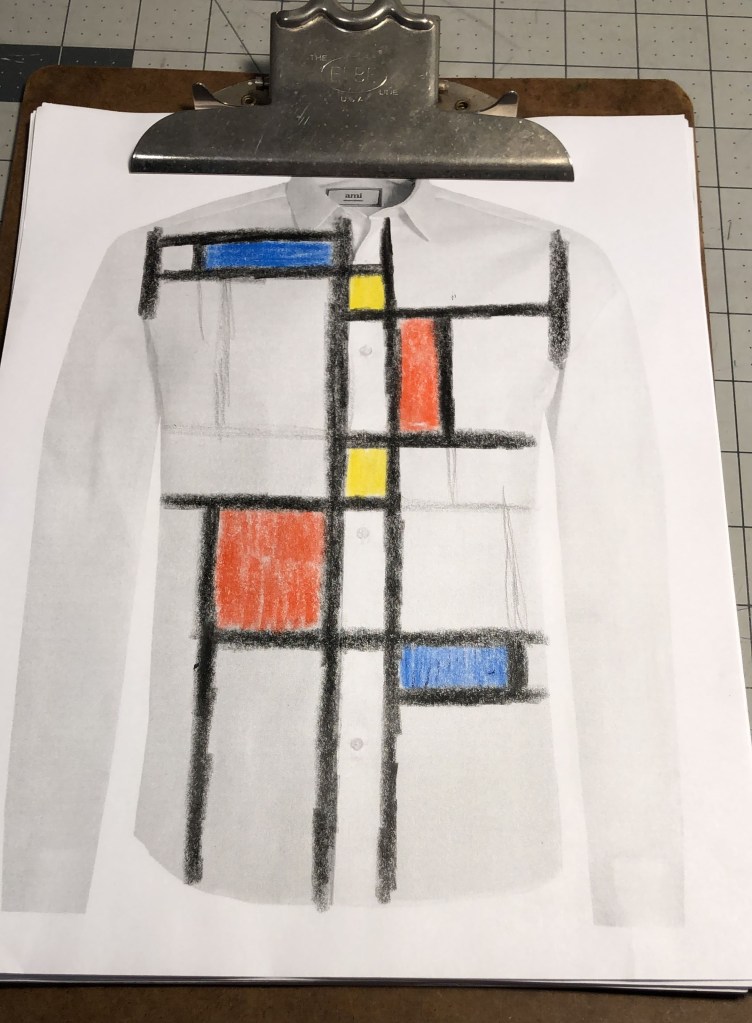
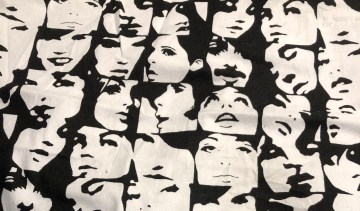
 I cut out the fronts, making sure I would match the pattern in the front. Then cut out the contrasting placket, and matching that to the underlying front pieces too. To make sure I had everything lined up correctly, I laid it out on my cutting table. And then it happened; my brain started going off the deep end again.
I cut out the fronts, making sure I would match the pattern in the front. Then cut out the contrasting placket, and matching that to the underlying front pieces too. To make sure I had everything lined up correctly, I laid it out on my cutting table. And then it happened; my brain started going off the deep end again.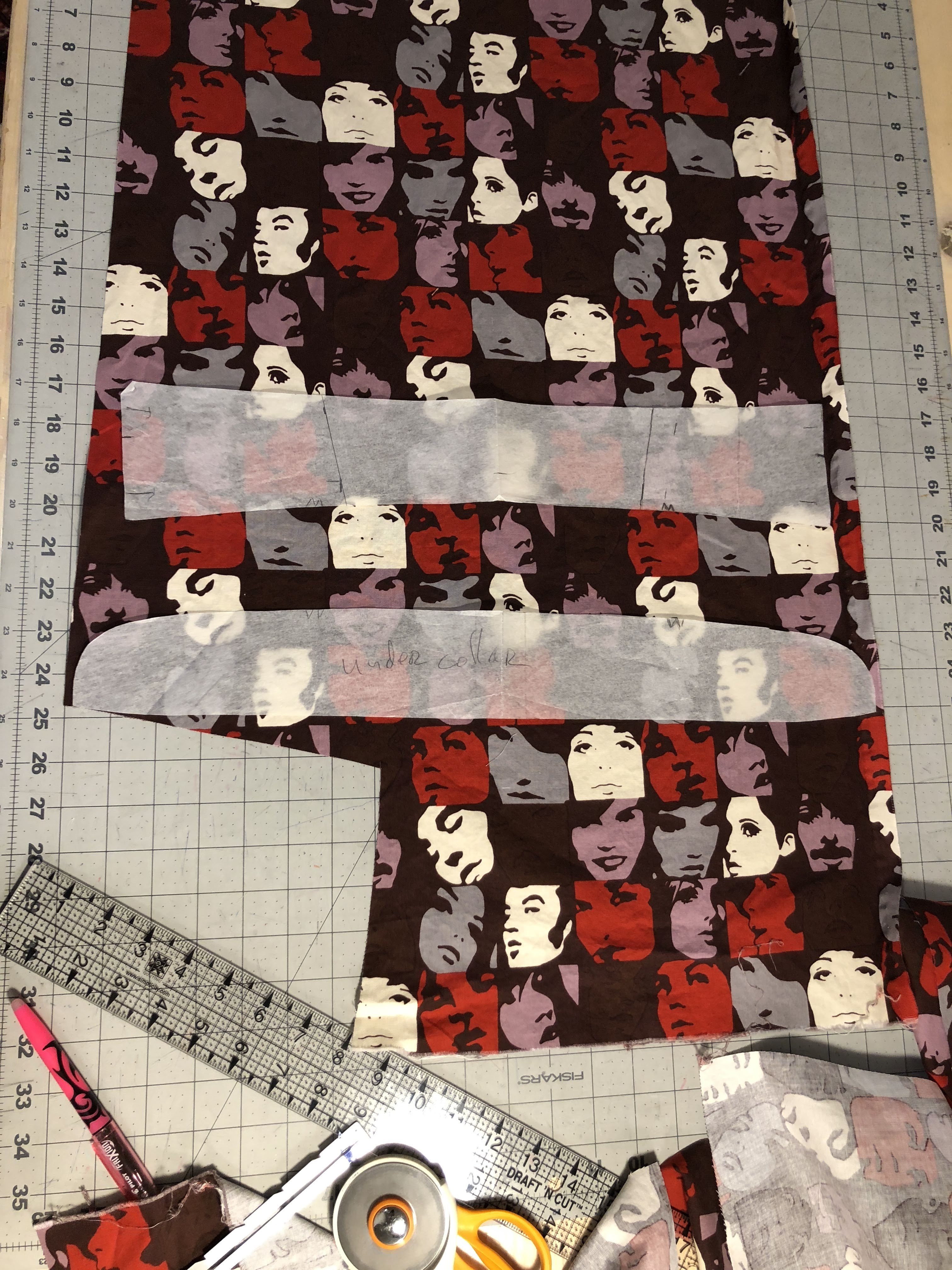 Of course, all of this would have to match the fabric pattern. So the challenge began of getting each piece out of the limited amount of contrasting fabric. With the placket on the sleeves being at a slight angle, that was not as easy as it initially sounded. I had to change how to cut the sleeves from the main fabric to accommodate what contrasting fabric I had left. And even then, trying to get the collar and collar band to fit in the remaining fabric almost didn’t work.
Of course, all of this would have to match the fabric pattern. So the challenge began of getting each piece out of the limited amount of contrasting fabric. With the placket on the sleeves being at a slight angle, that was not as easy as it initially sounded. I had to change how to cut the sleeves from the main fabric to accommodate what contrasting fabric I had left. And even then, trying to get the collar and collar band to fit in the remaining fabric almost didn’t work.
































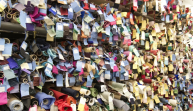 While looking at the wall of rolls with samples, trying to find an interesting pattern, I saw this little piece of cloth that looked like a cityscape. It was a really small print, but I thought it could make an interesting pattern. Much to my surprise it was a complete border print. And when I saw it I knew I wanted it. Vibrant colours, interesting pattern.
While looking at the wall of rolls with samples, trying to find an interesting pattern, I saw this little piece of cloth that looked like a cityscape. It was a really small print, but I thought it could make an interesting pattern. Much to my surprise it was a complete border print. And when I saw it I knew I wanted it. Vibrant colours, interesting pattern.